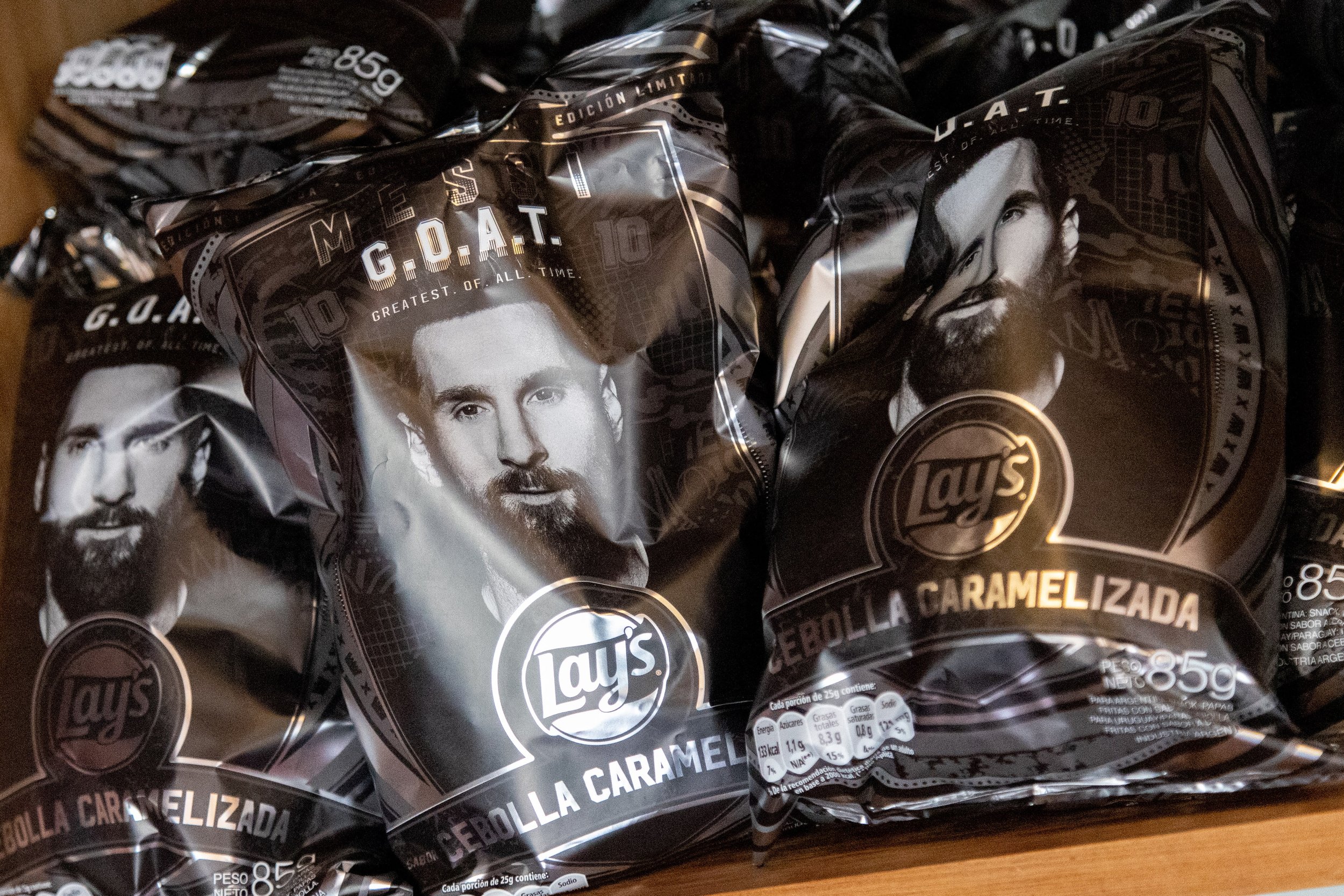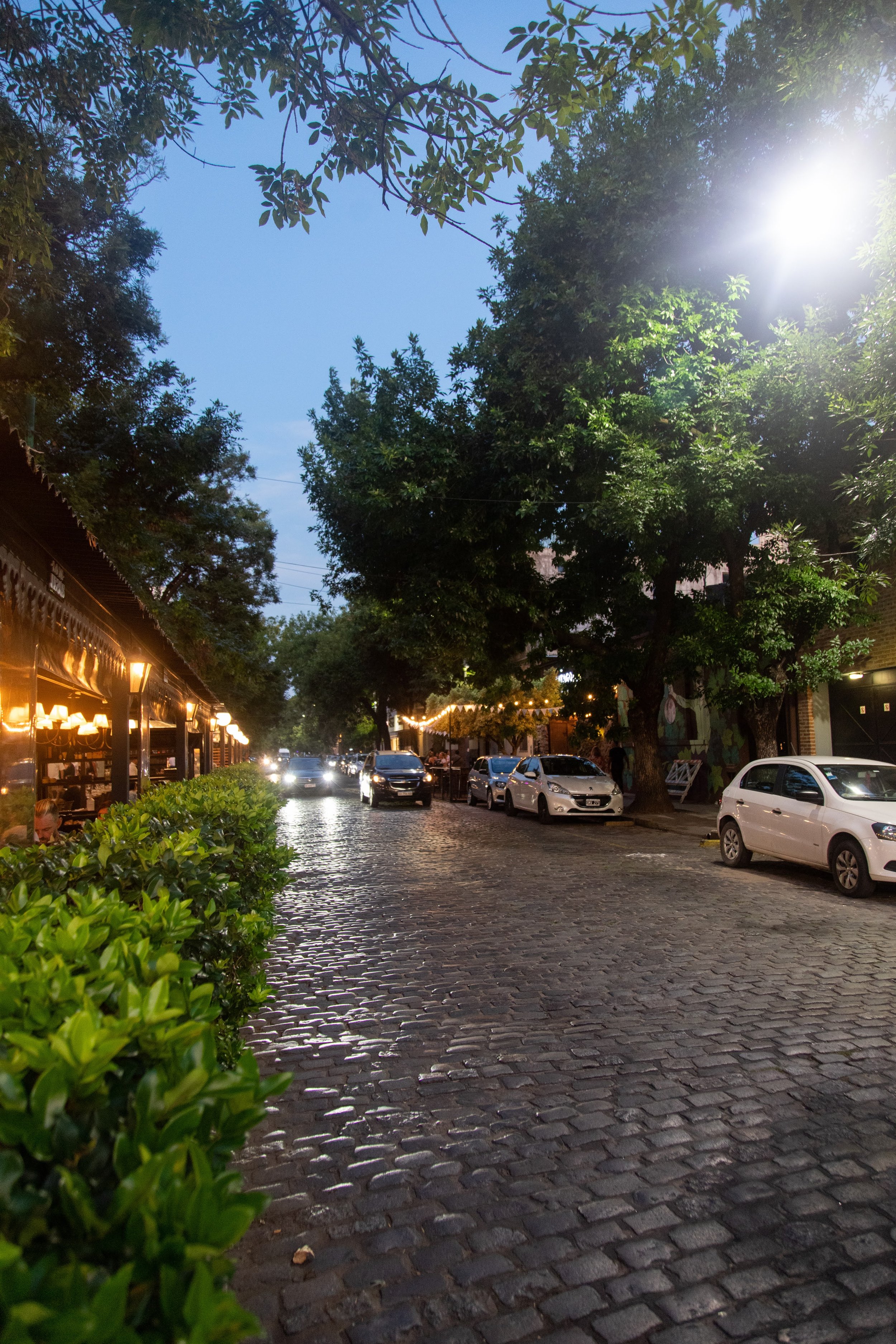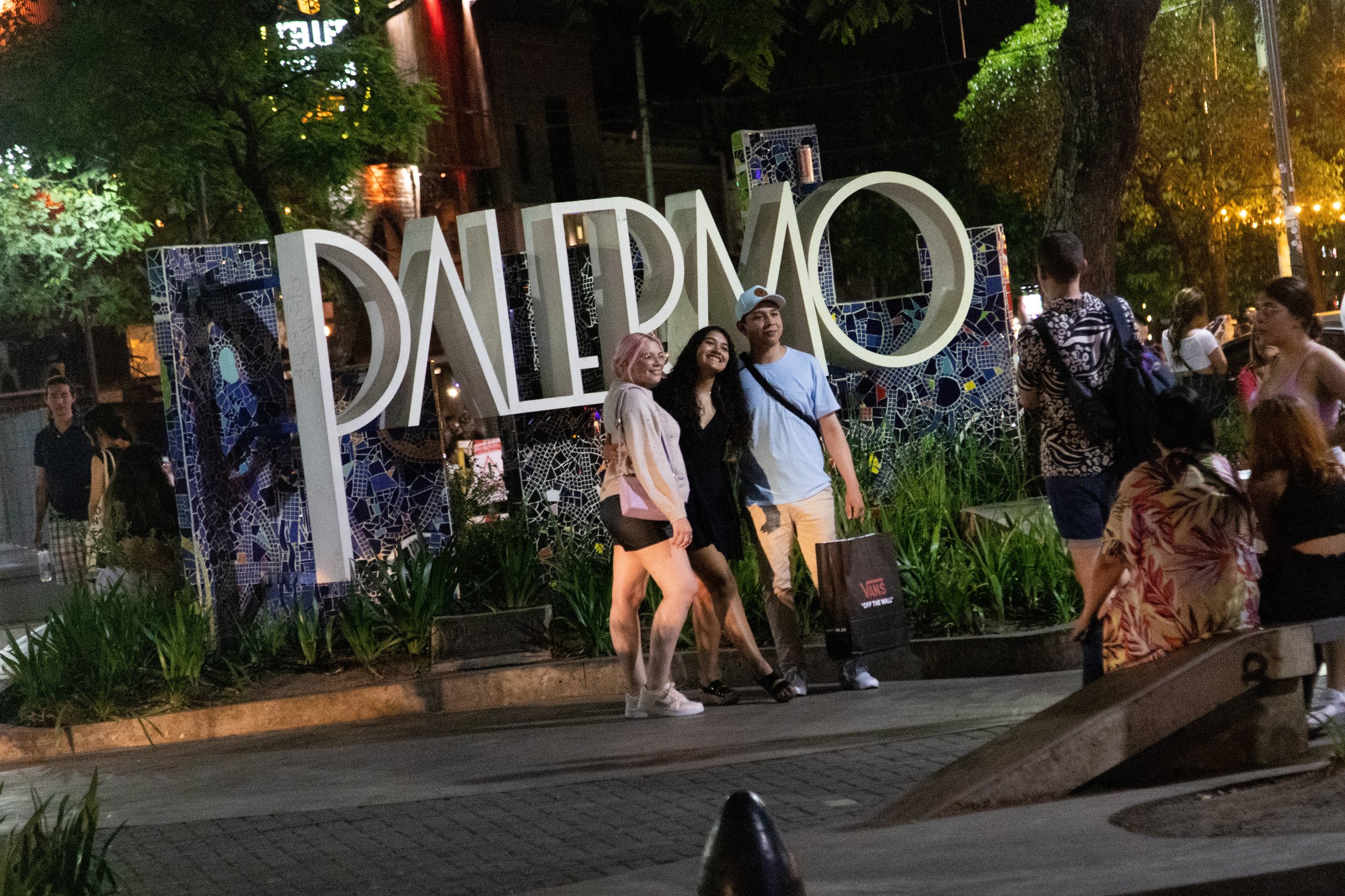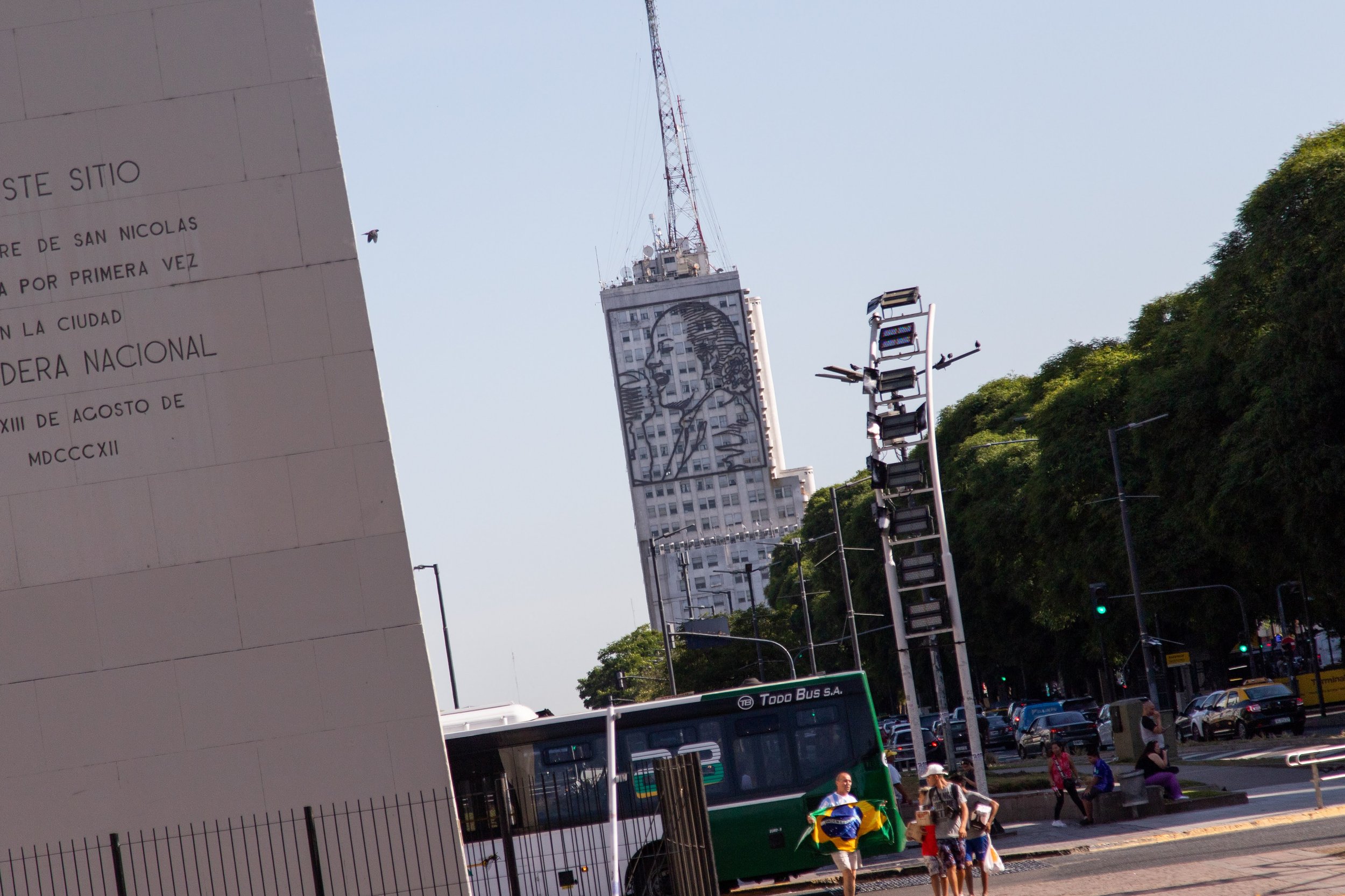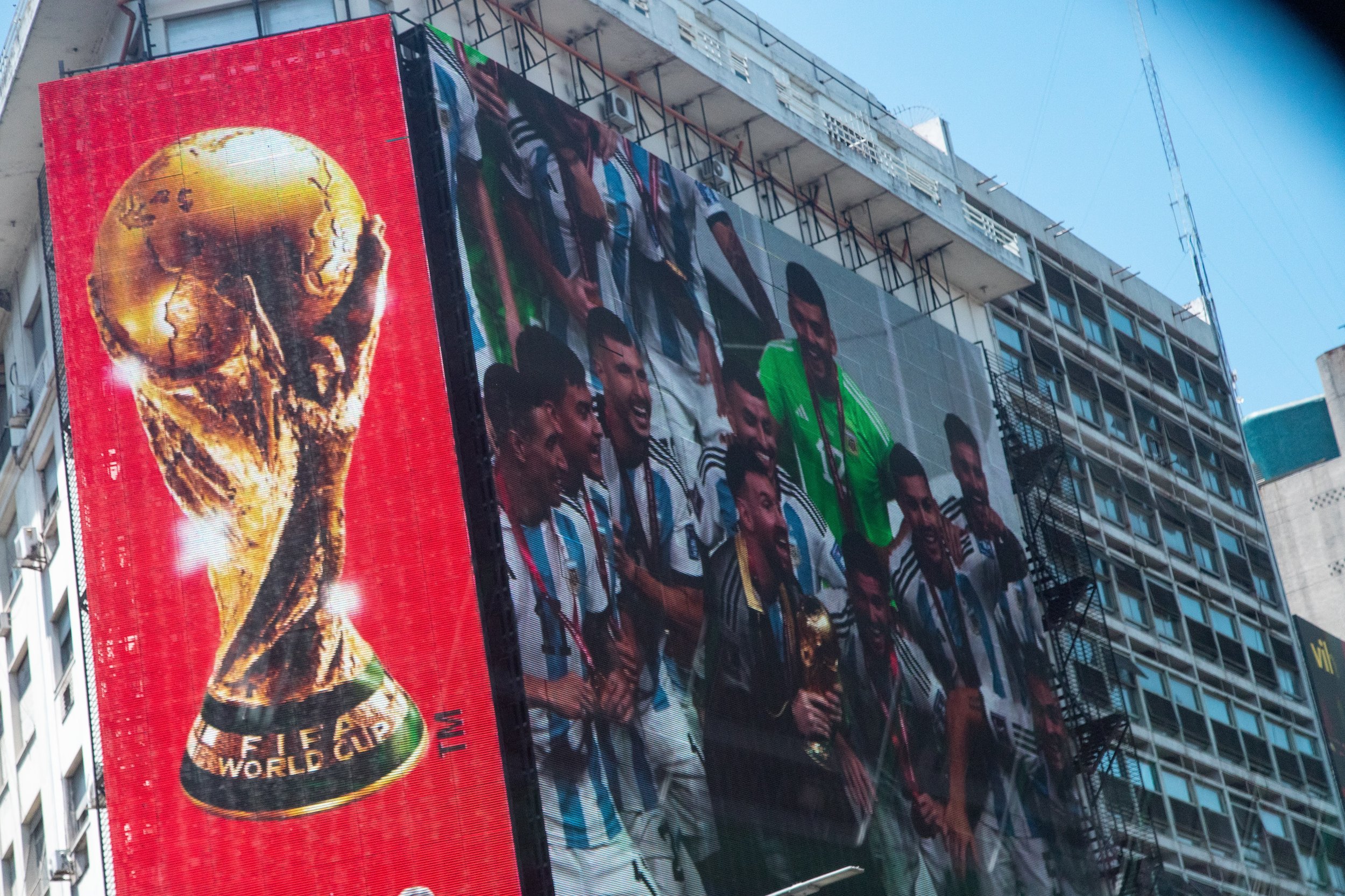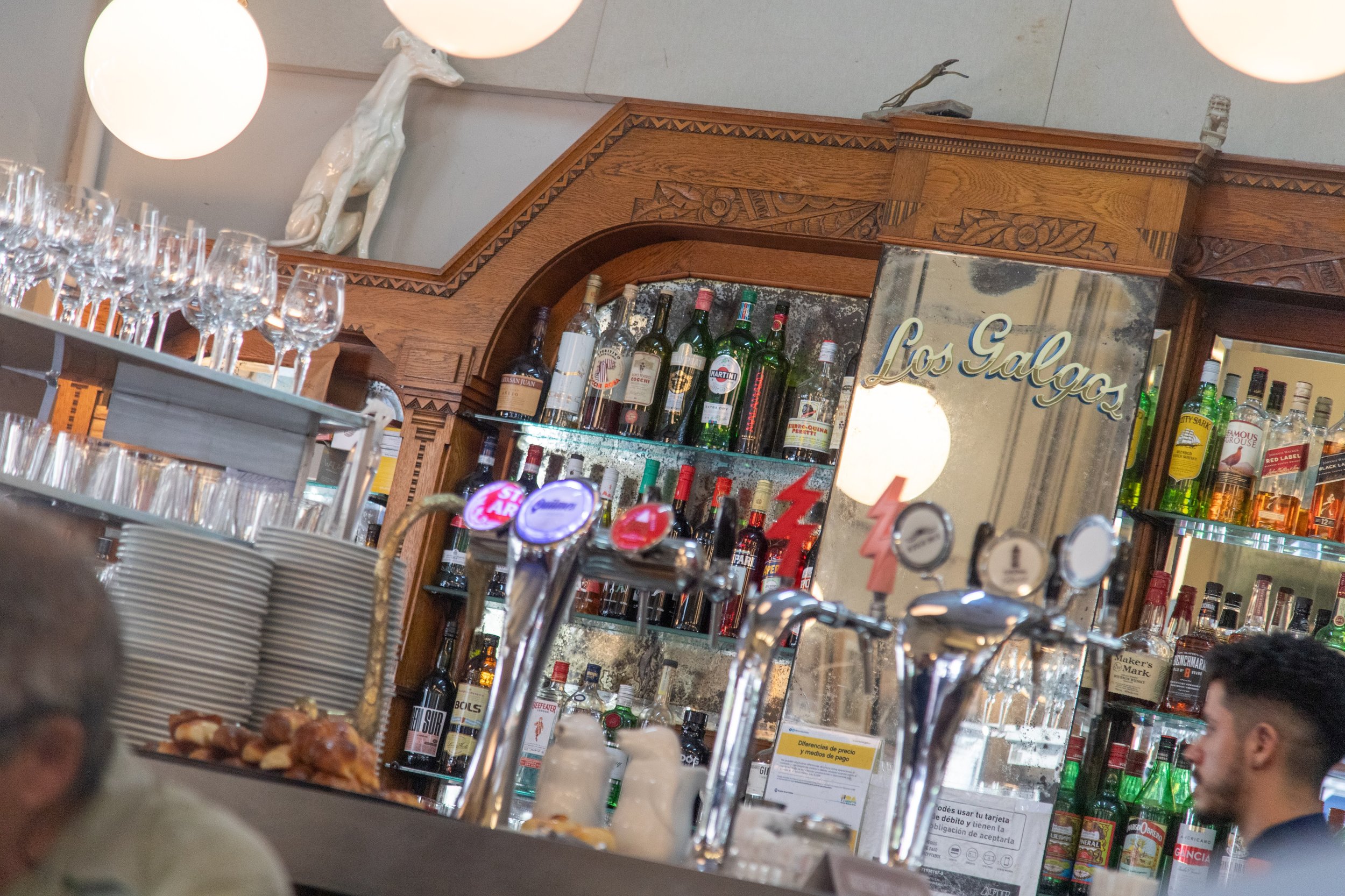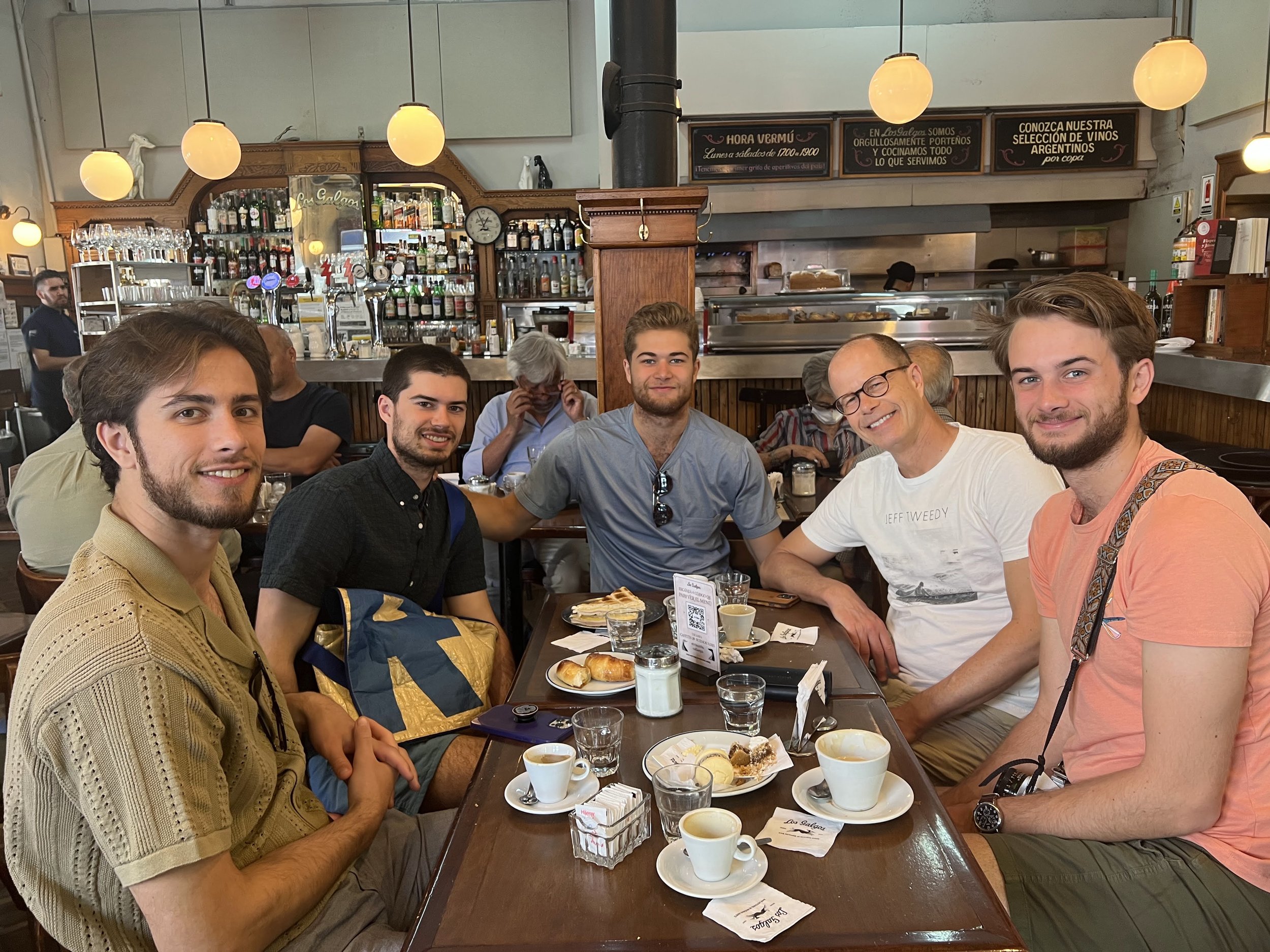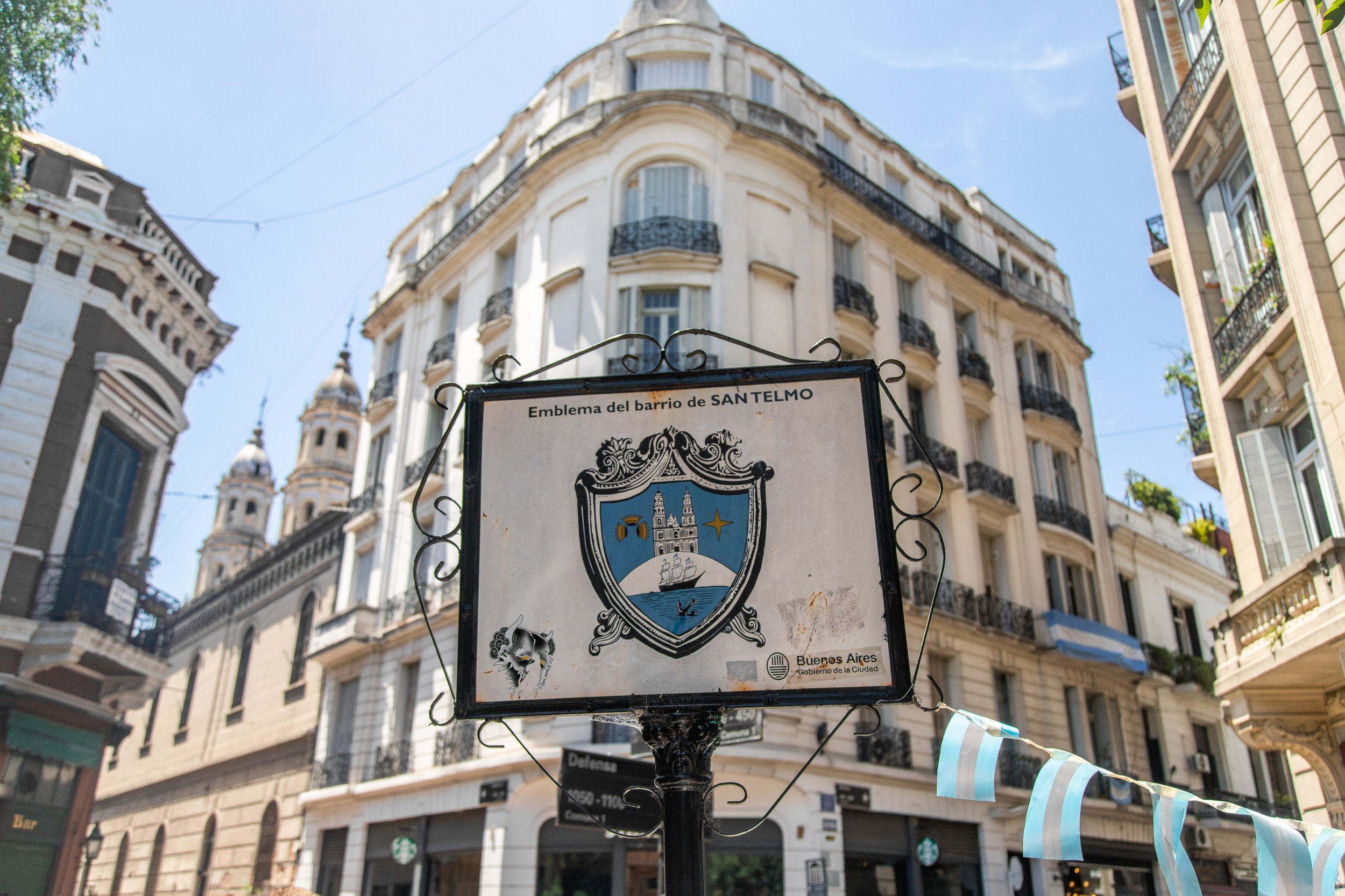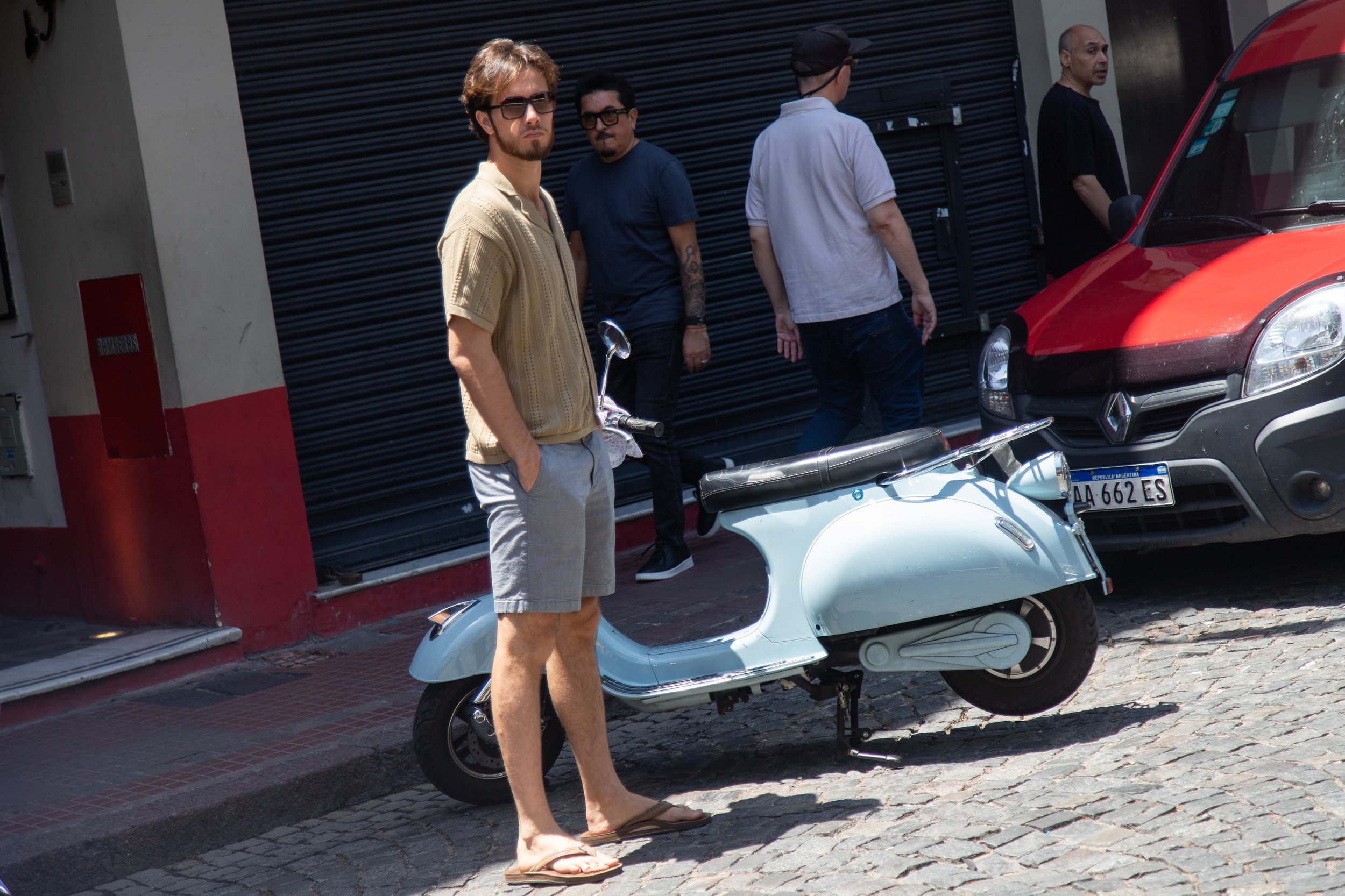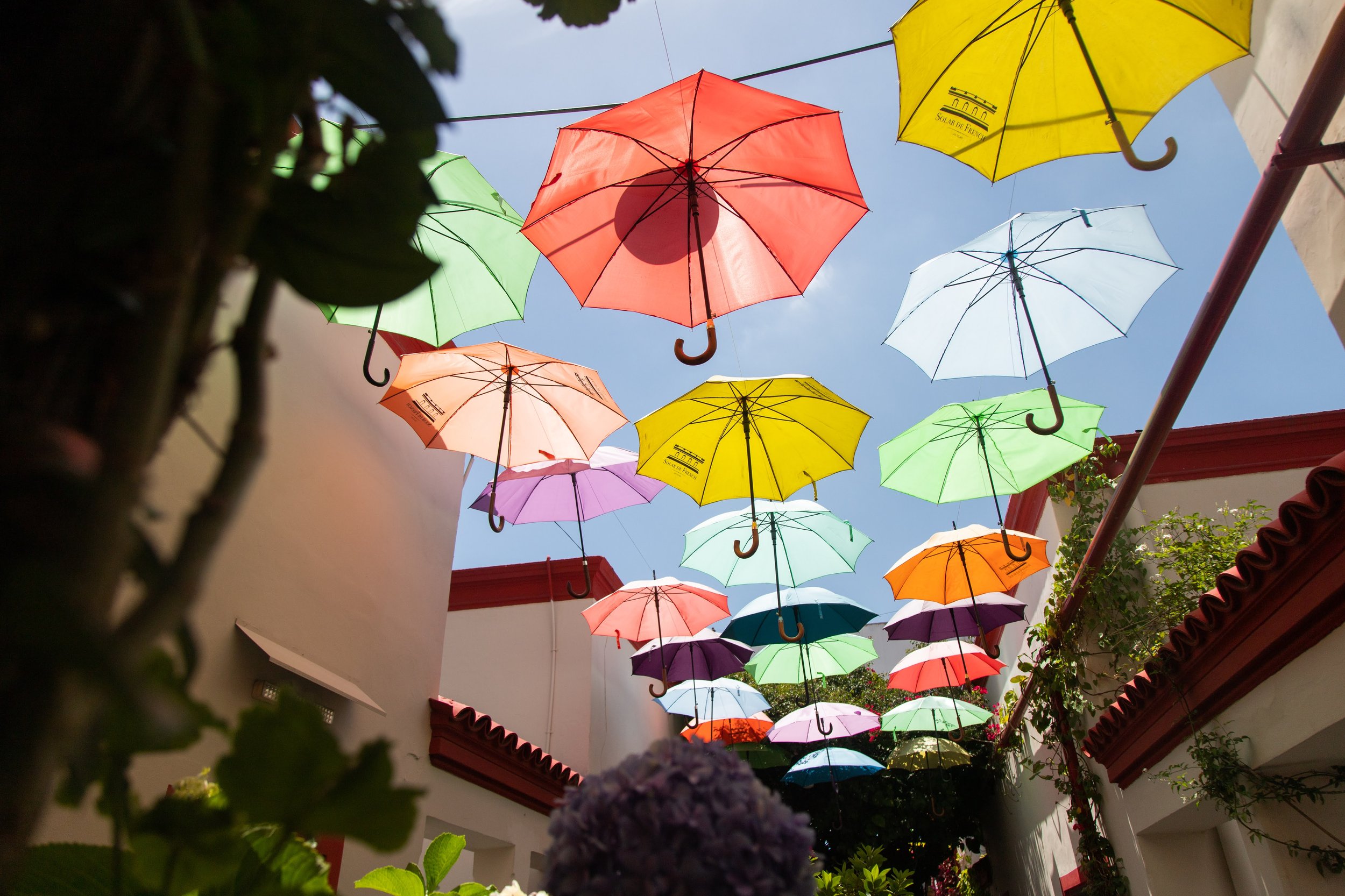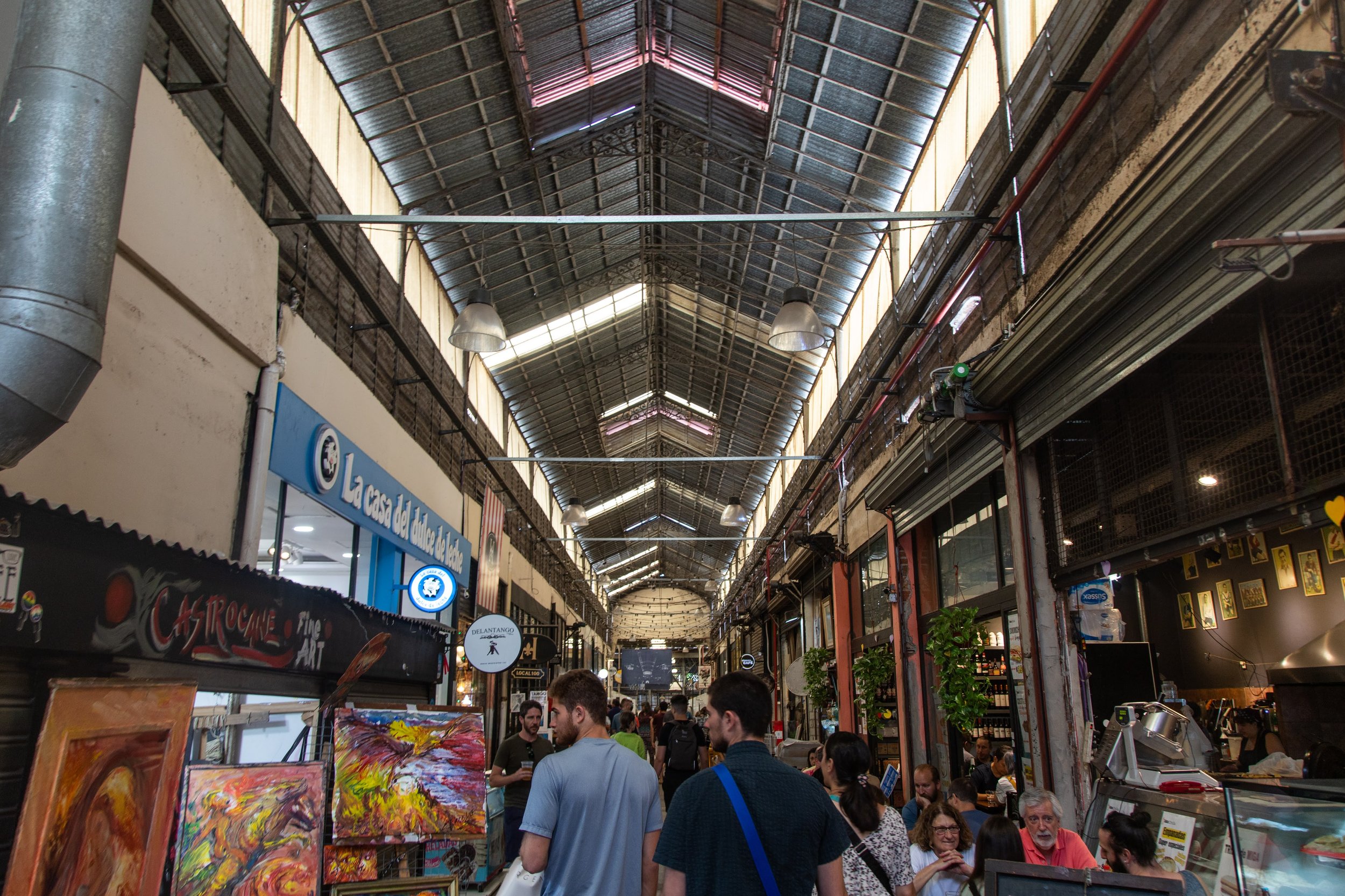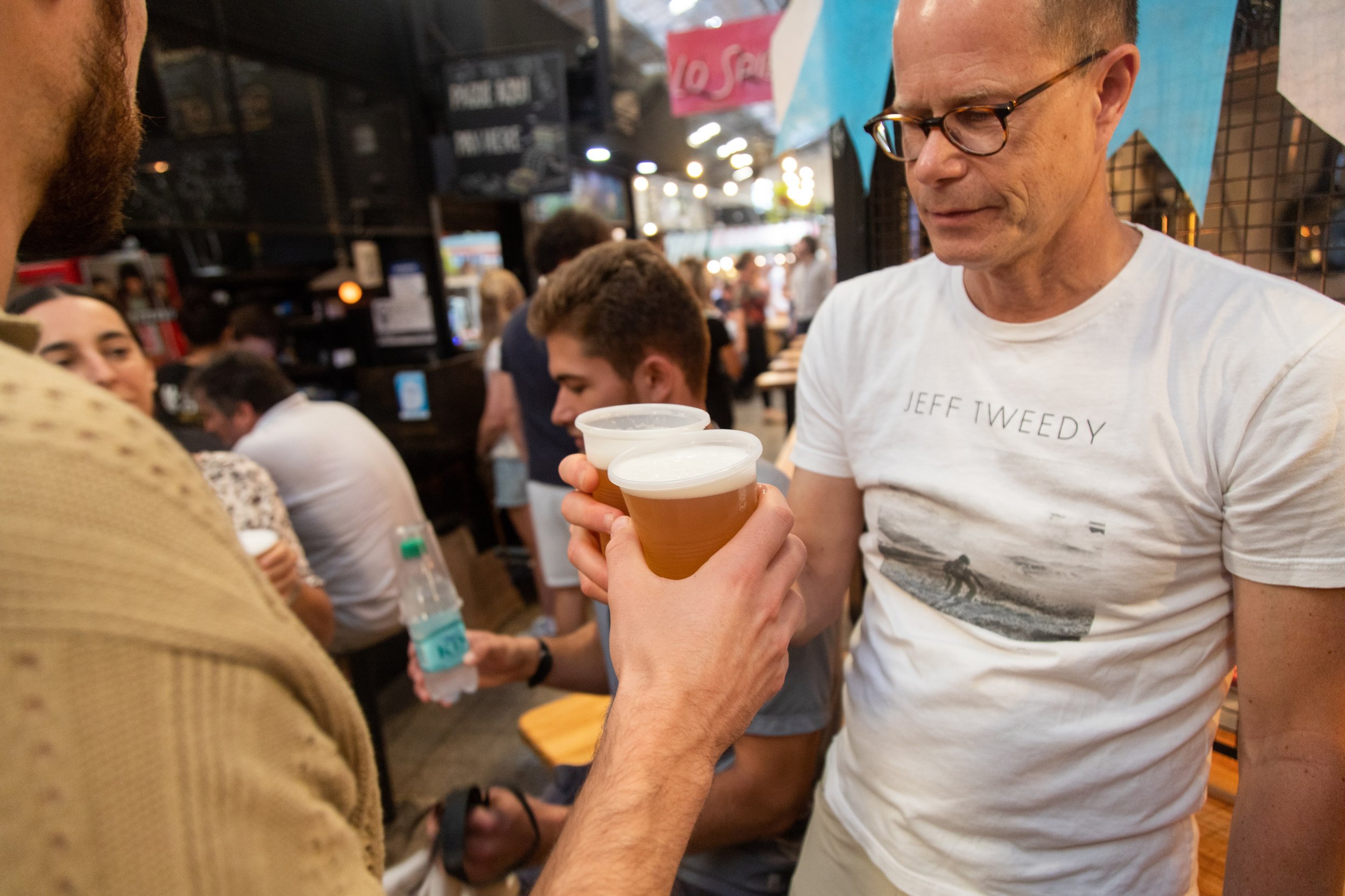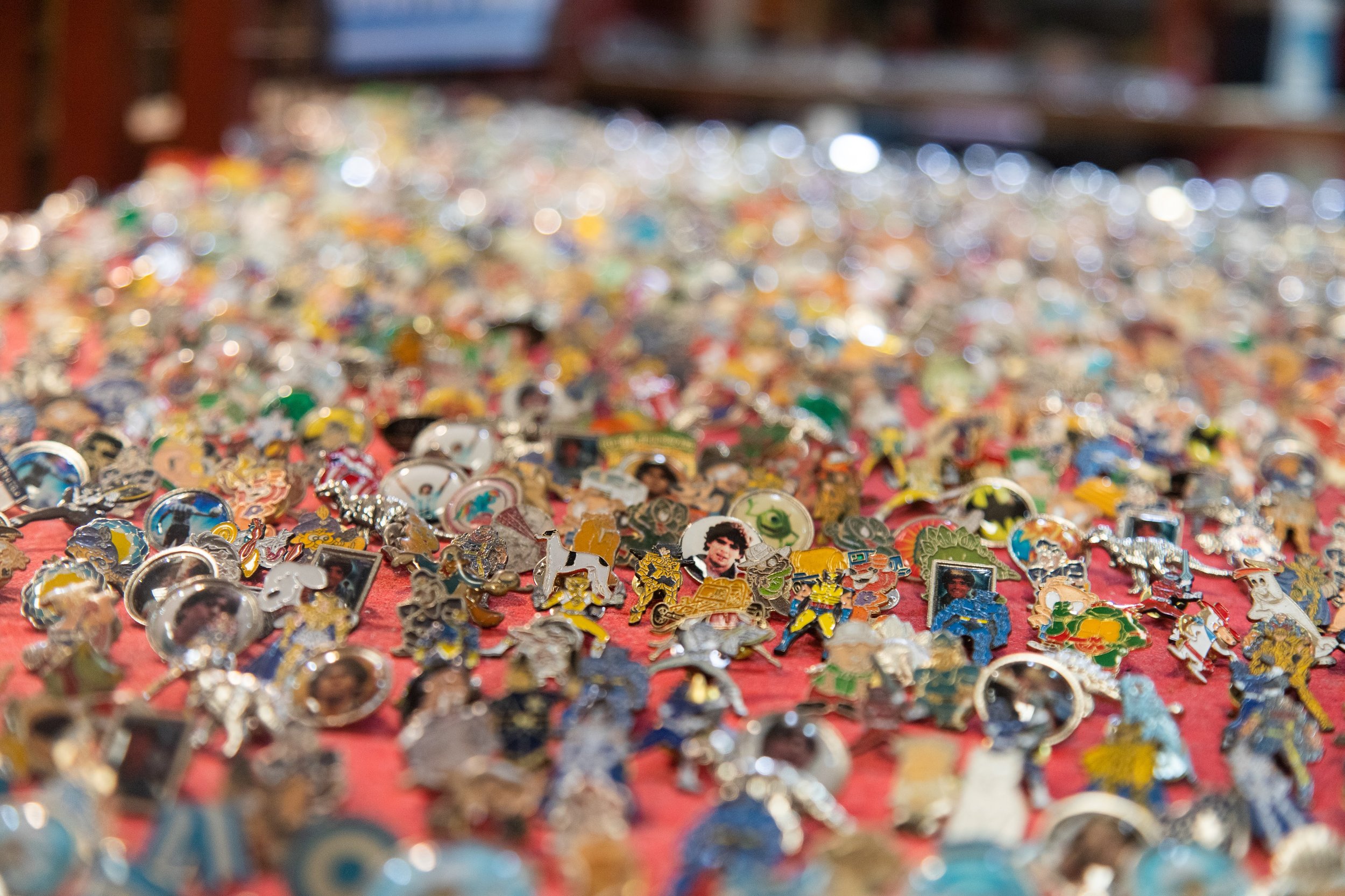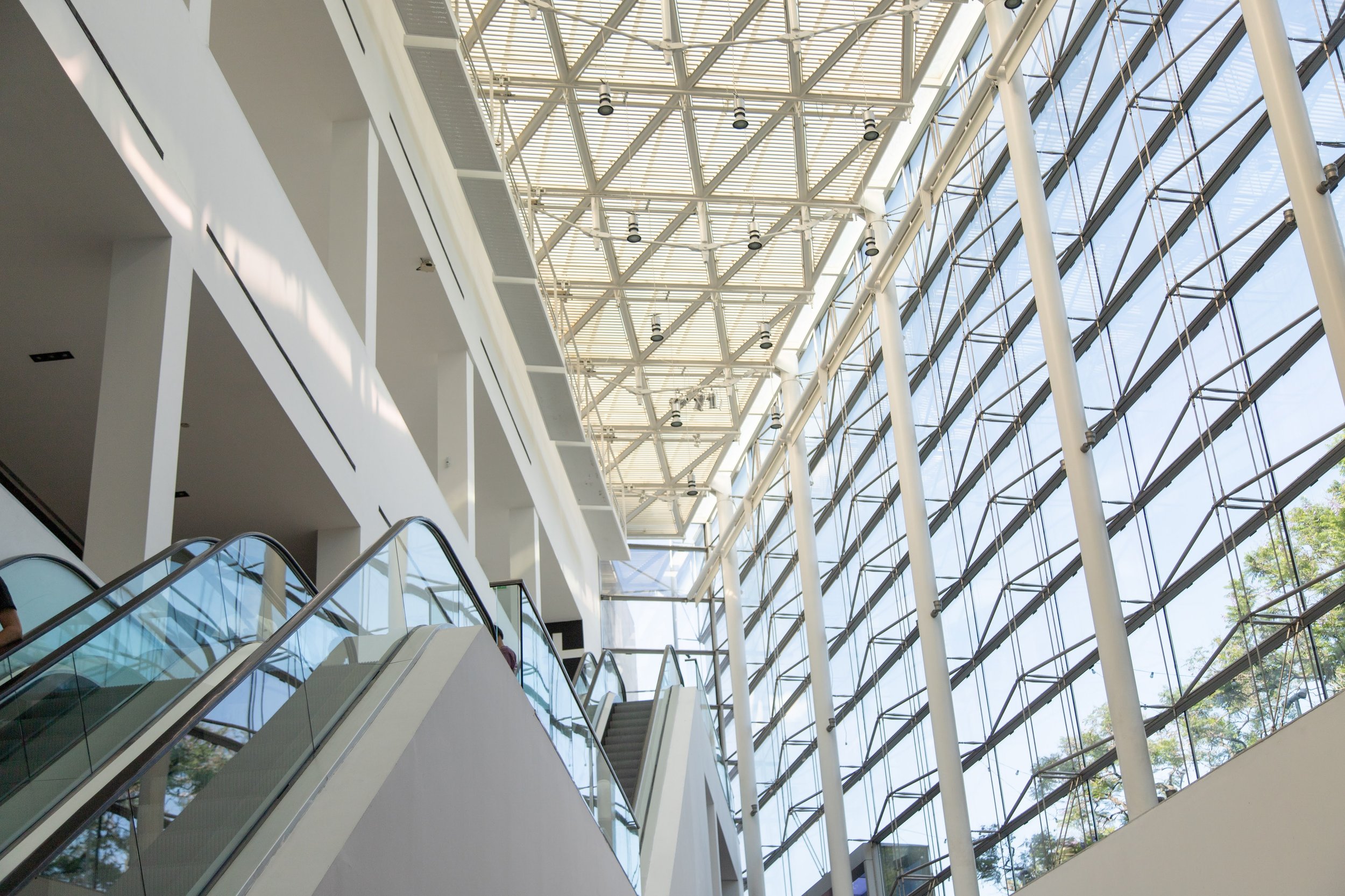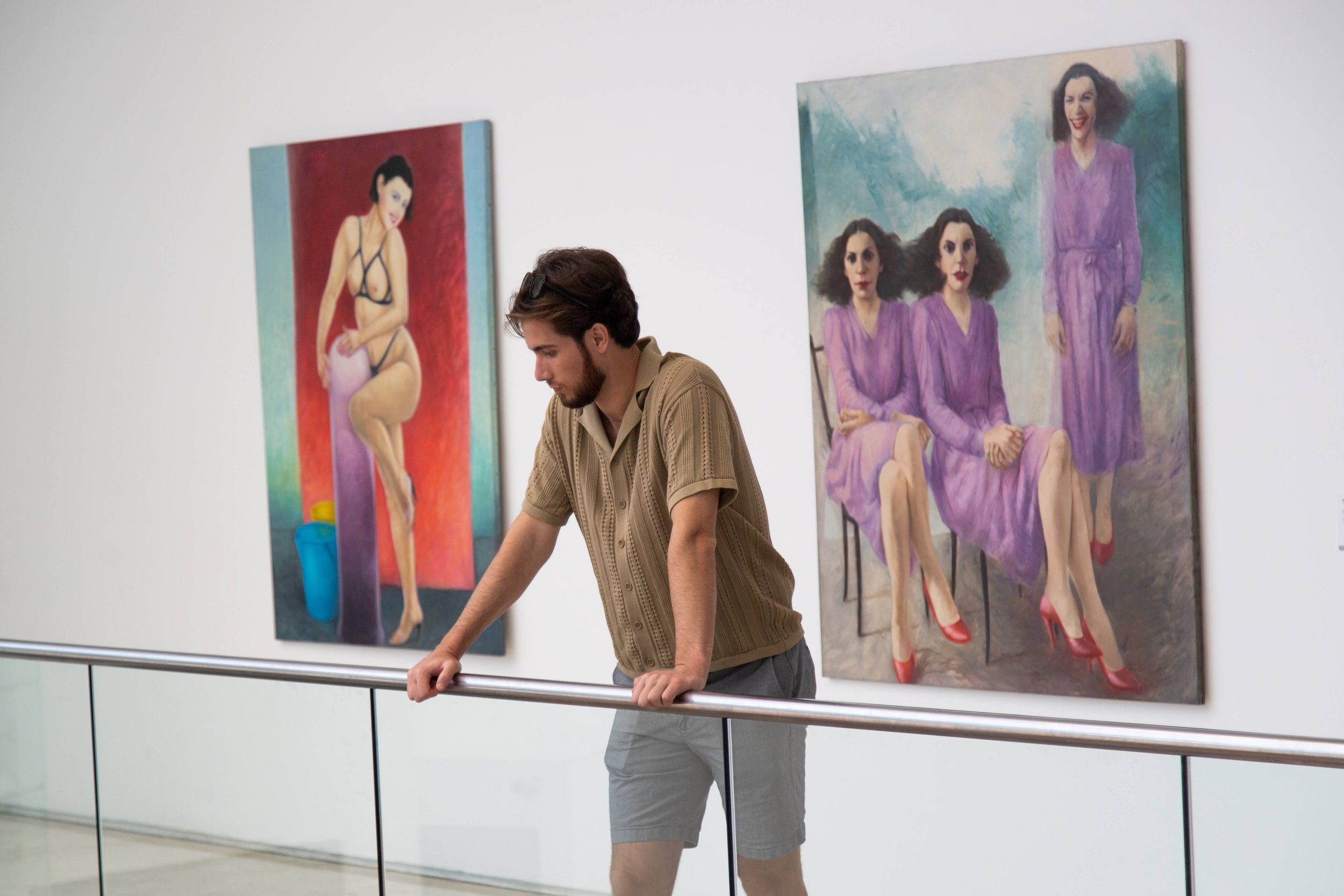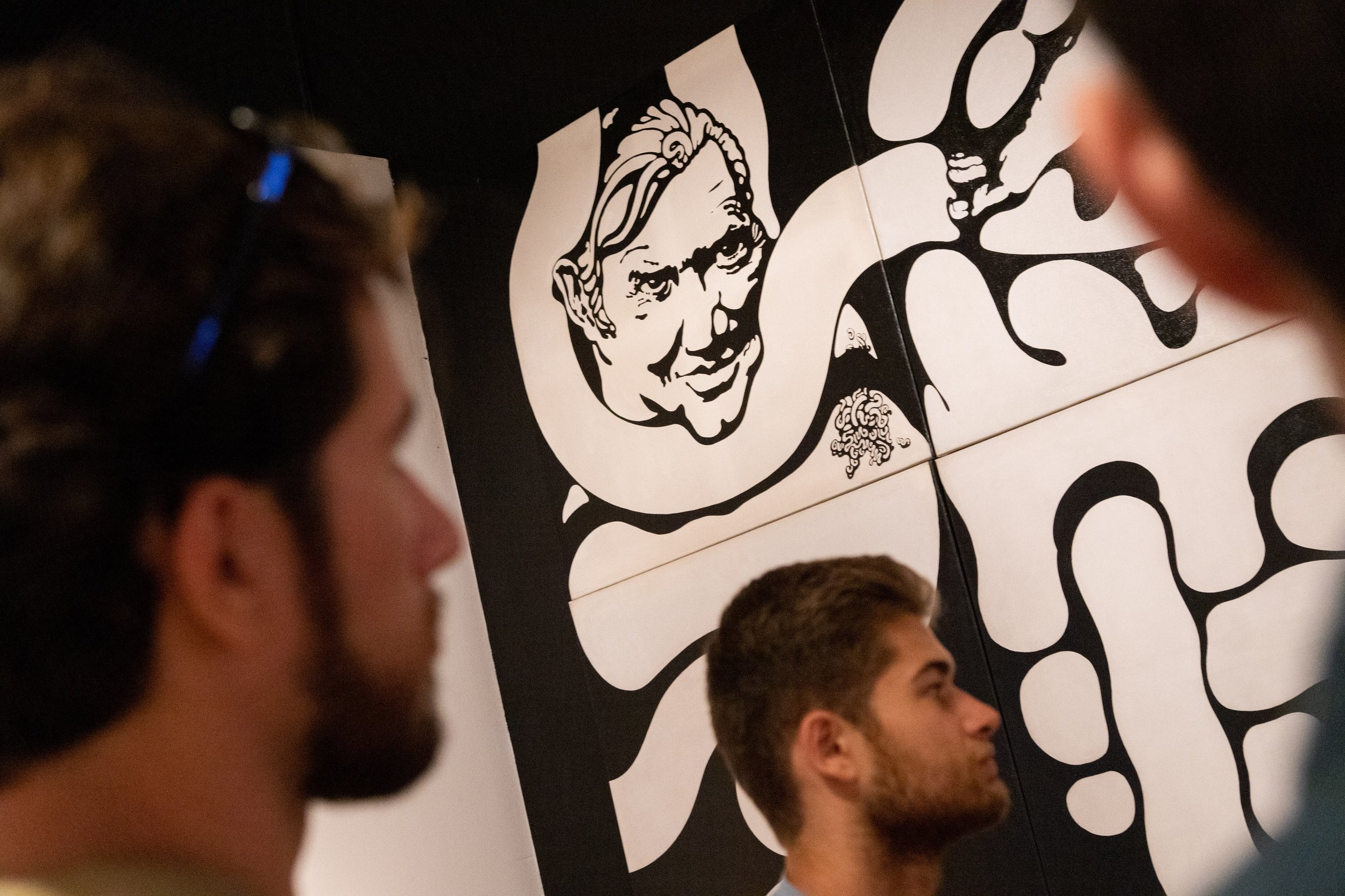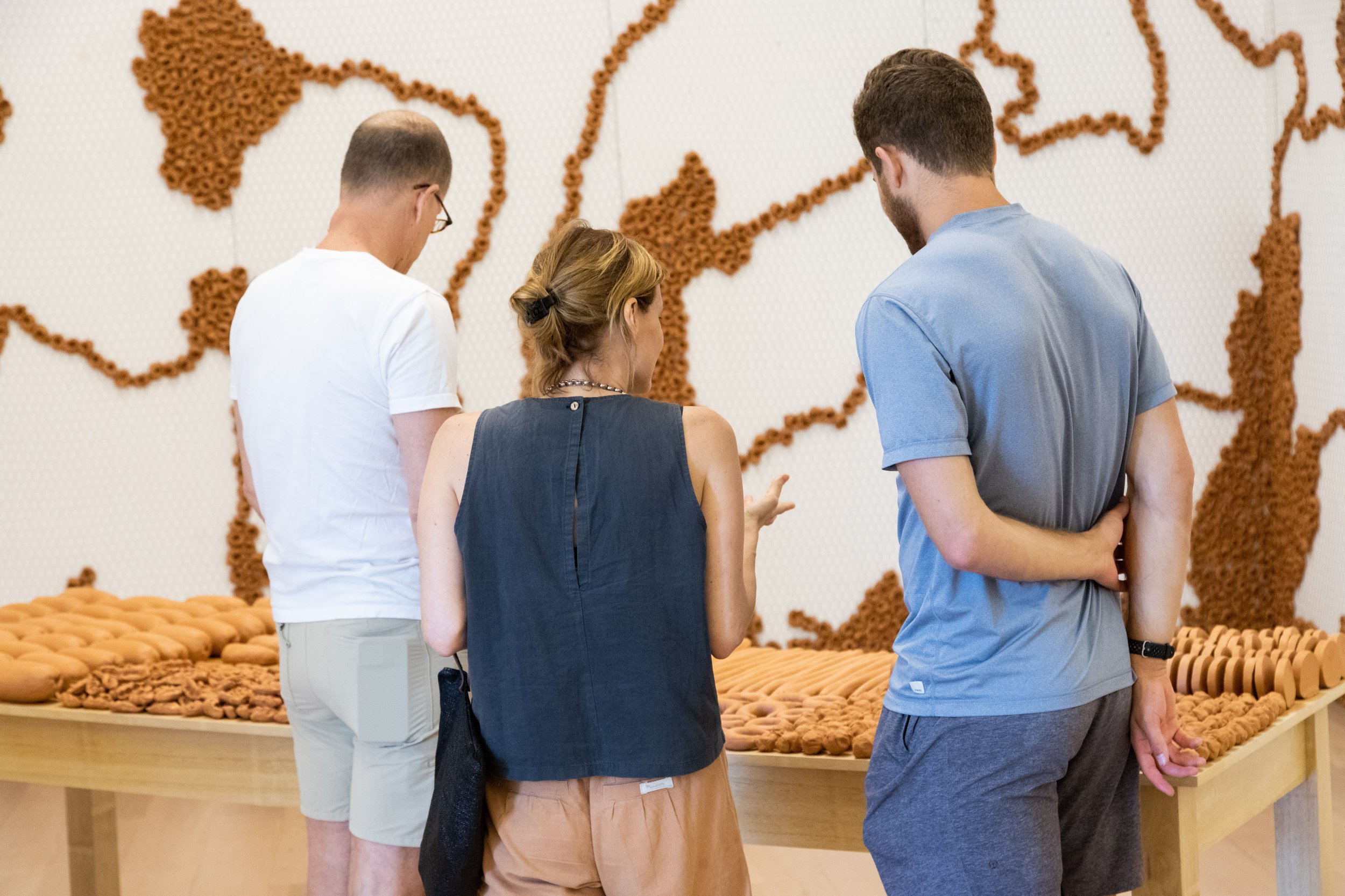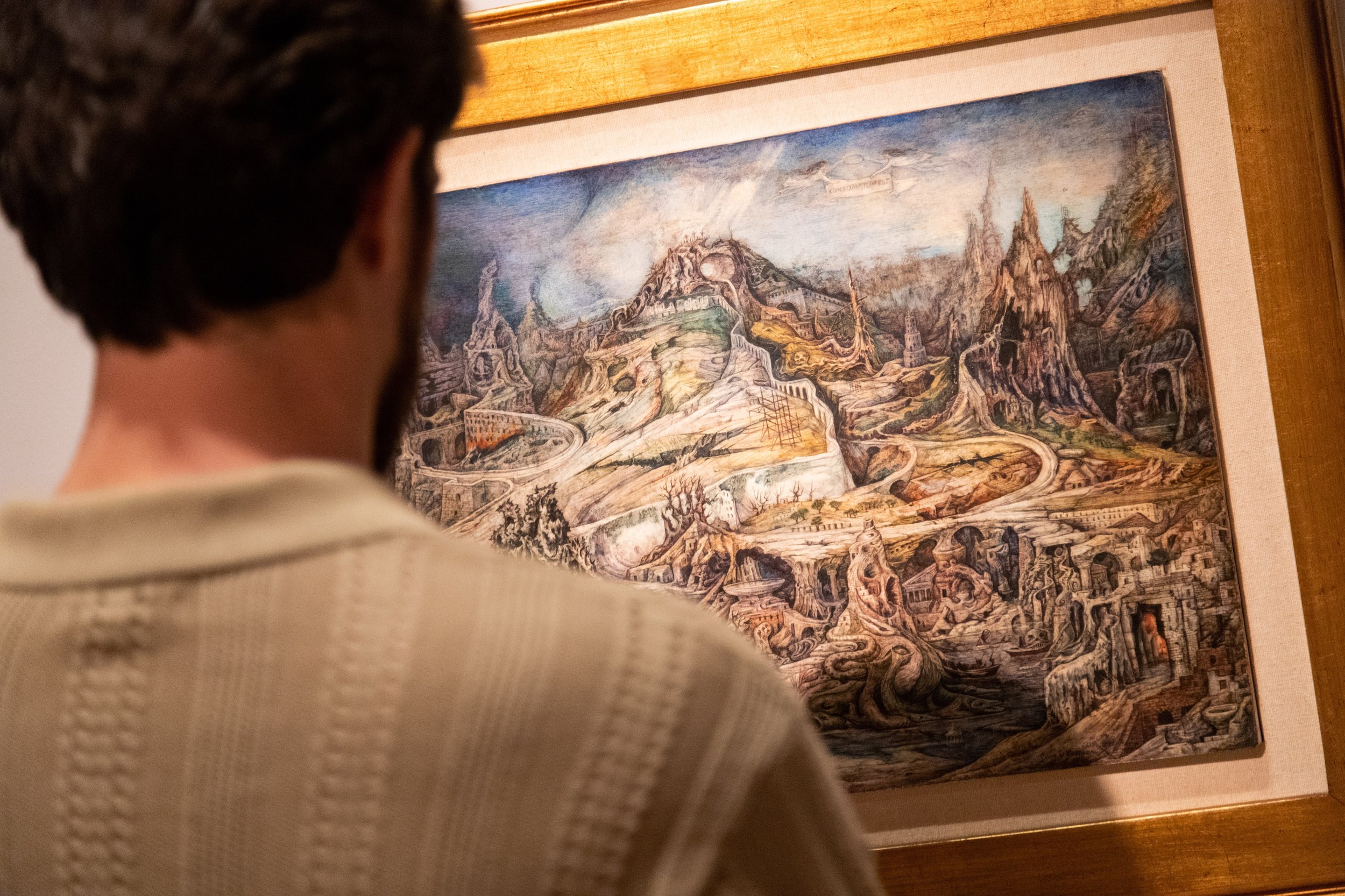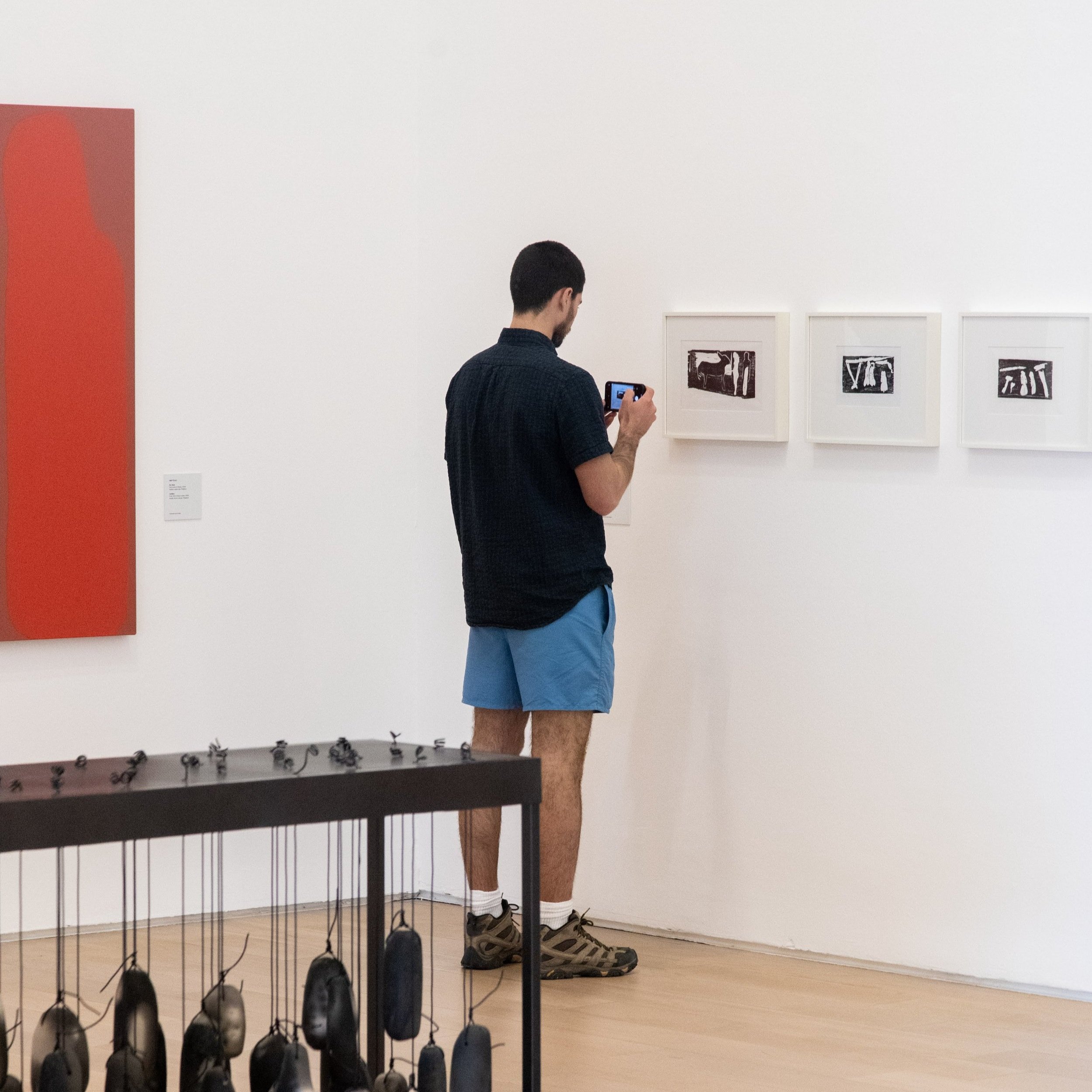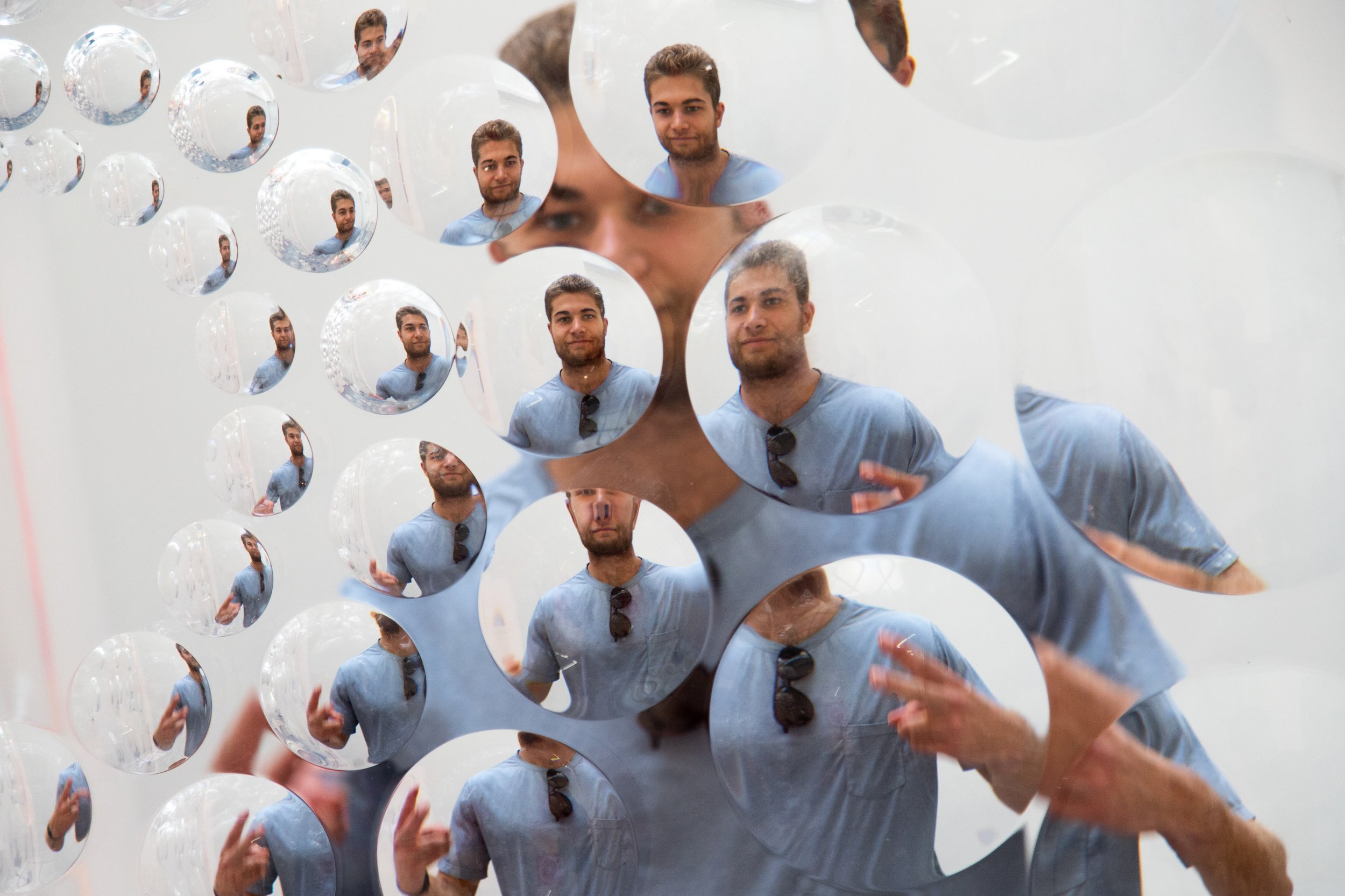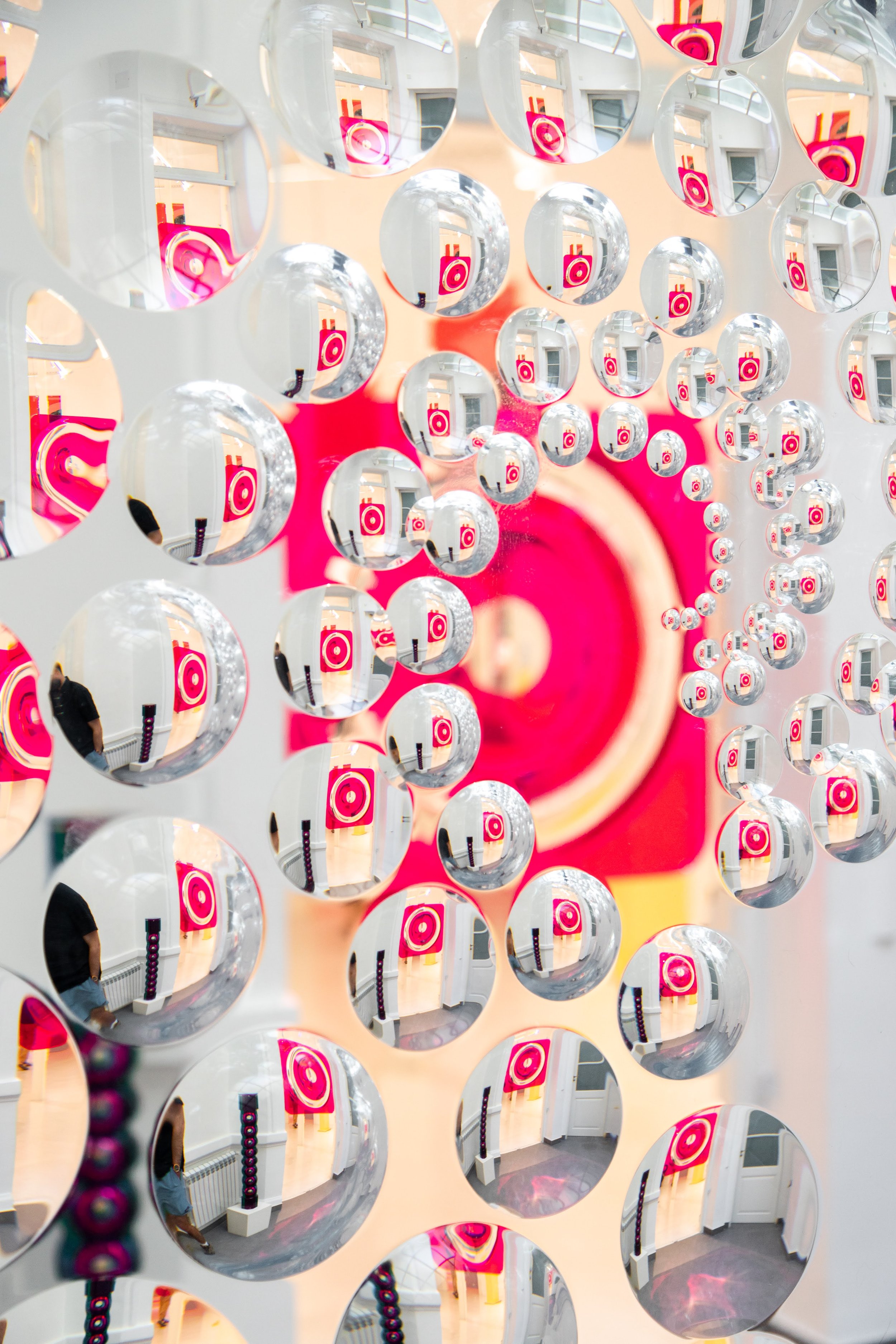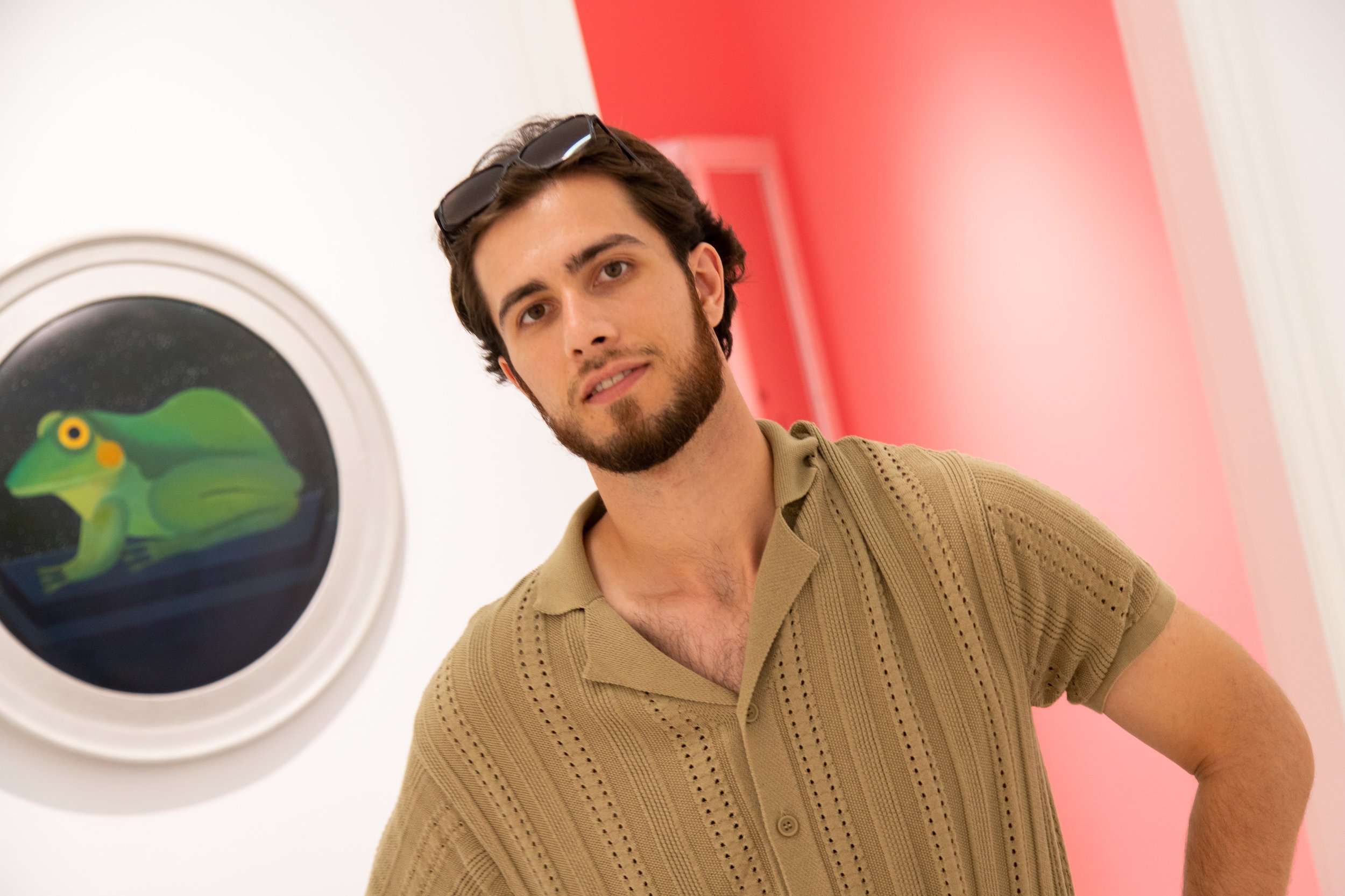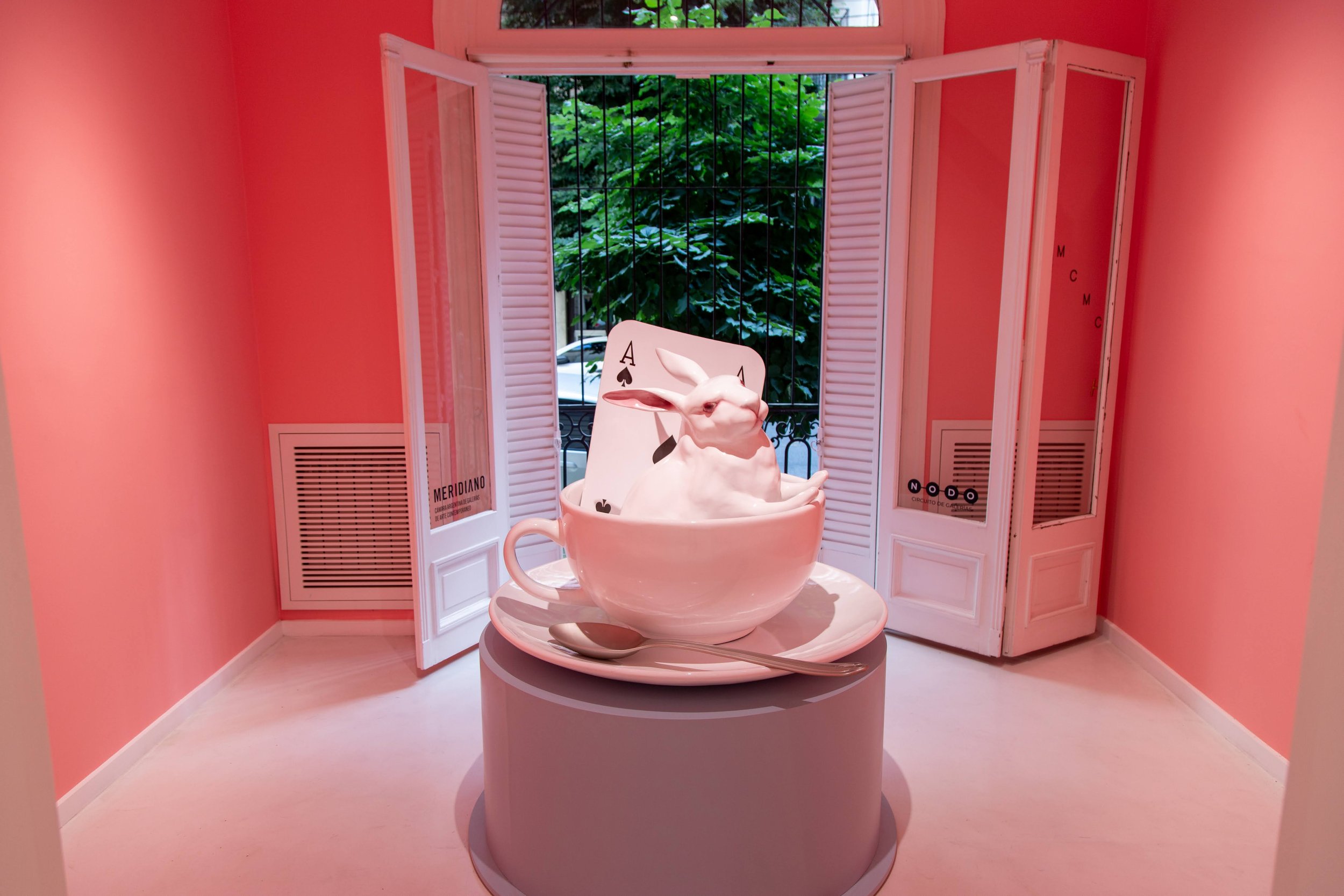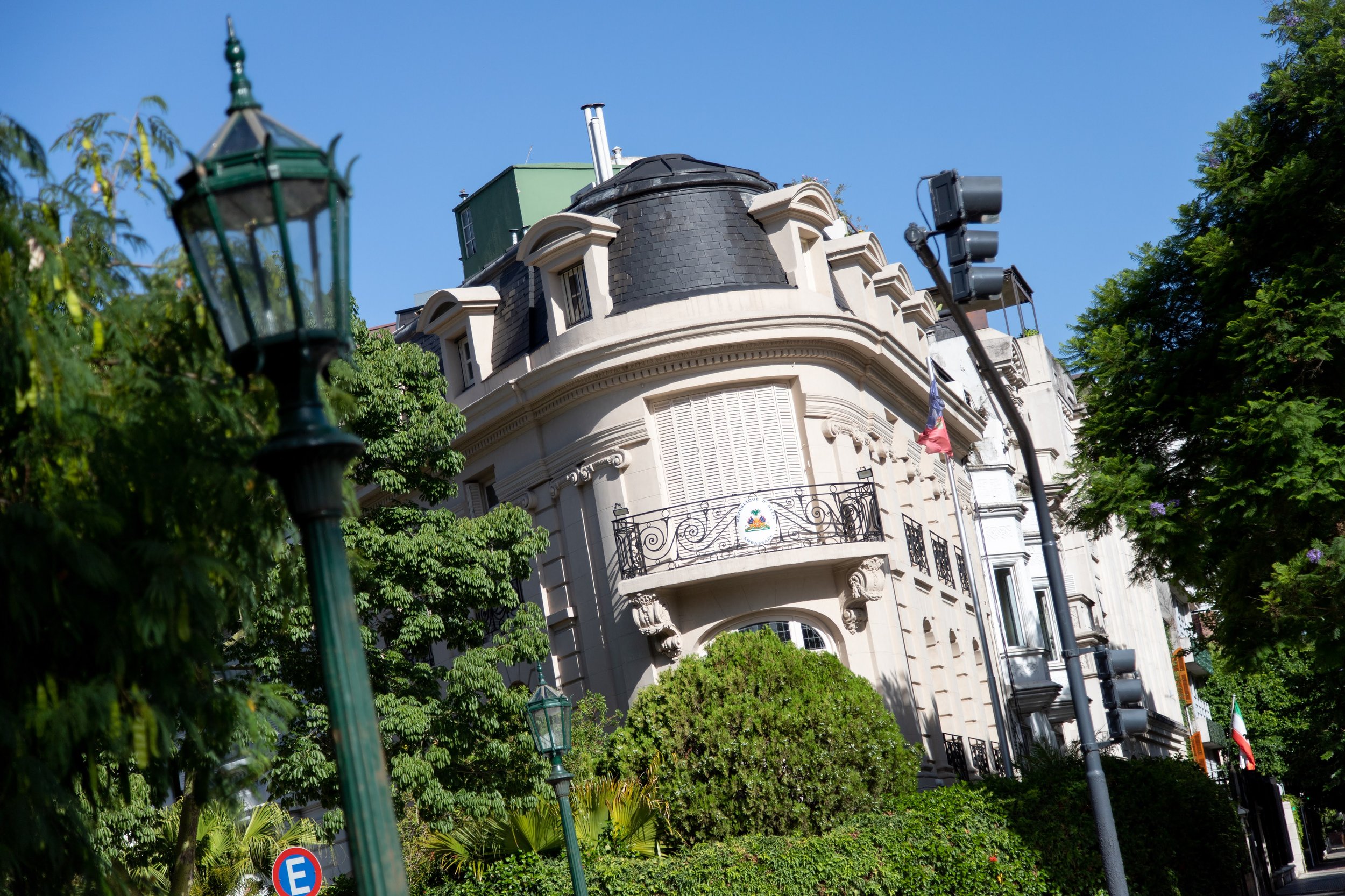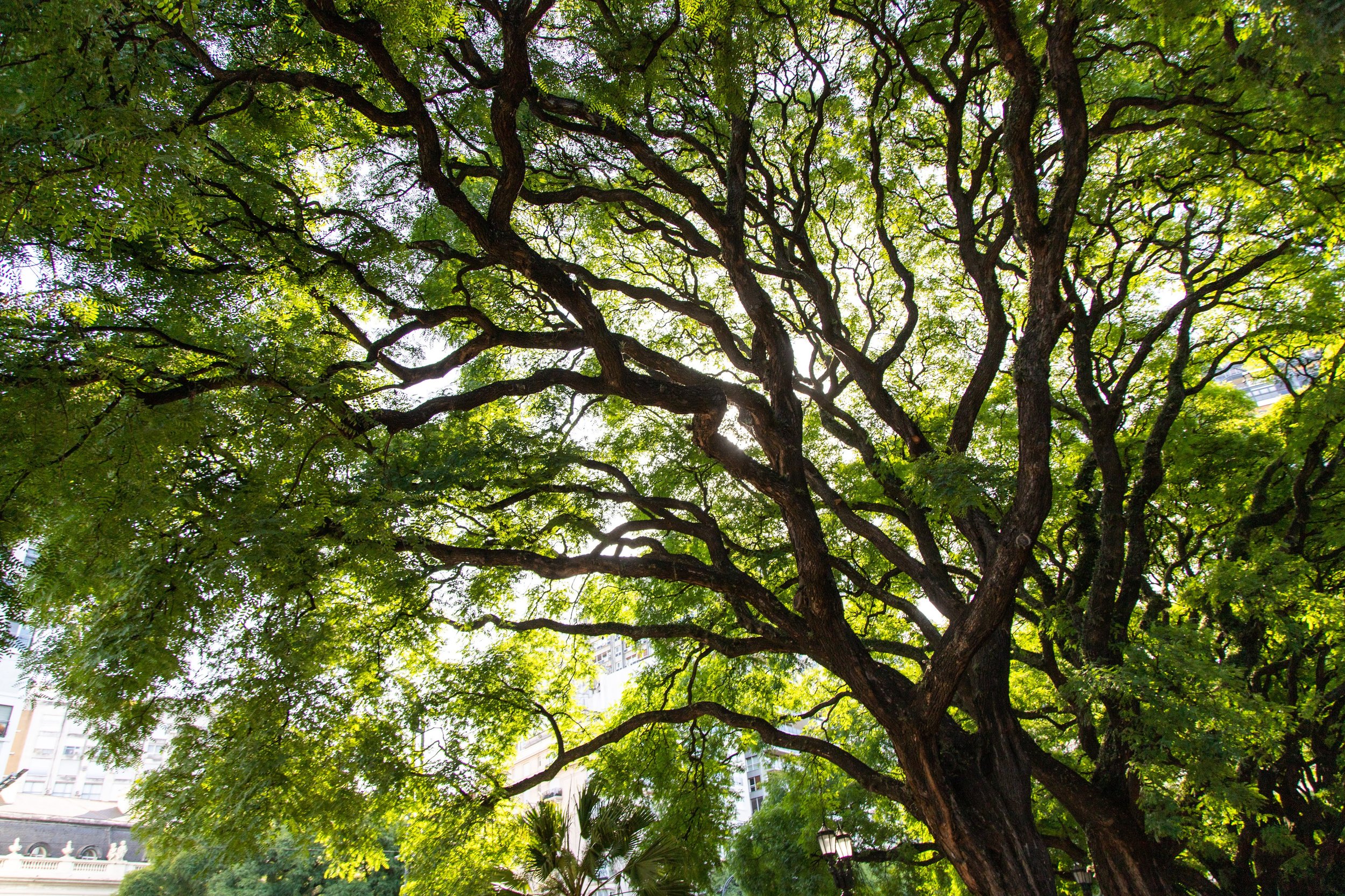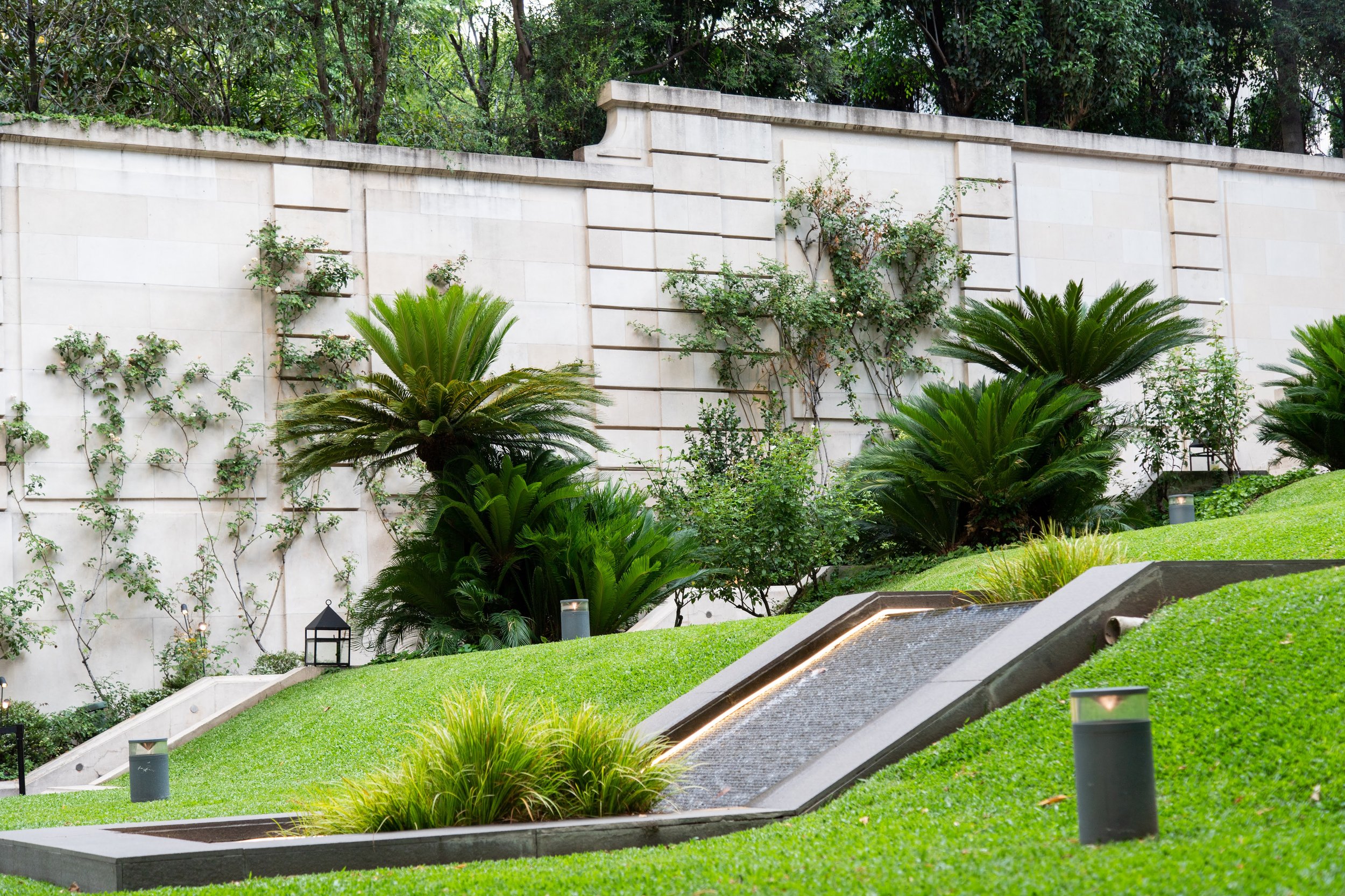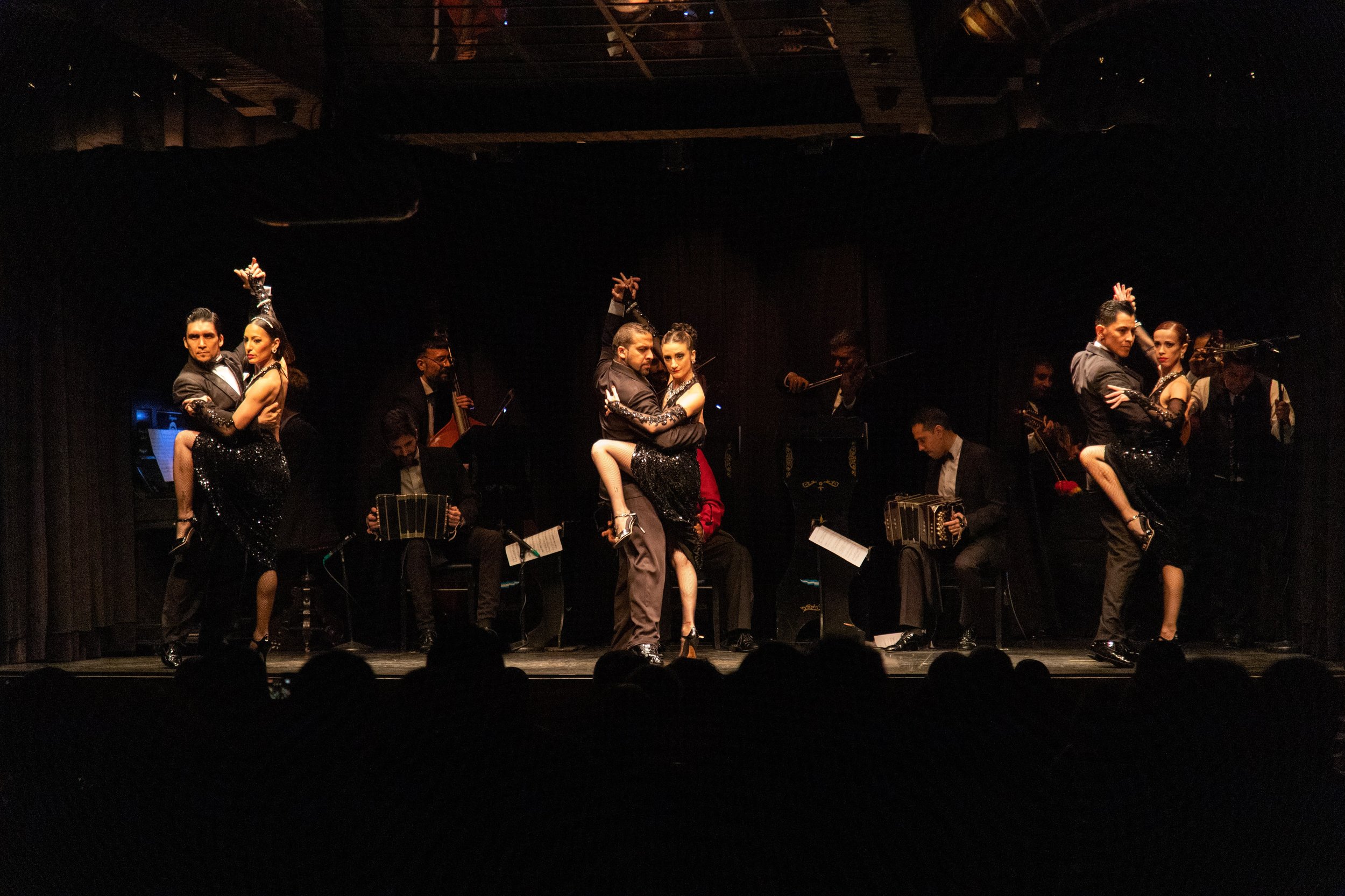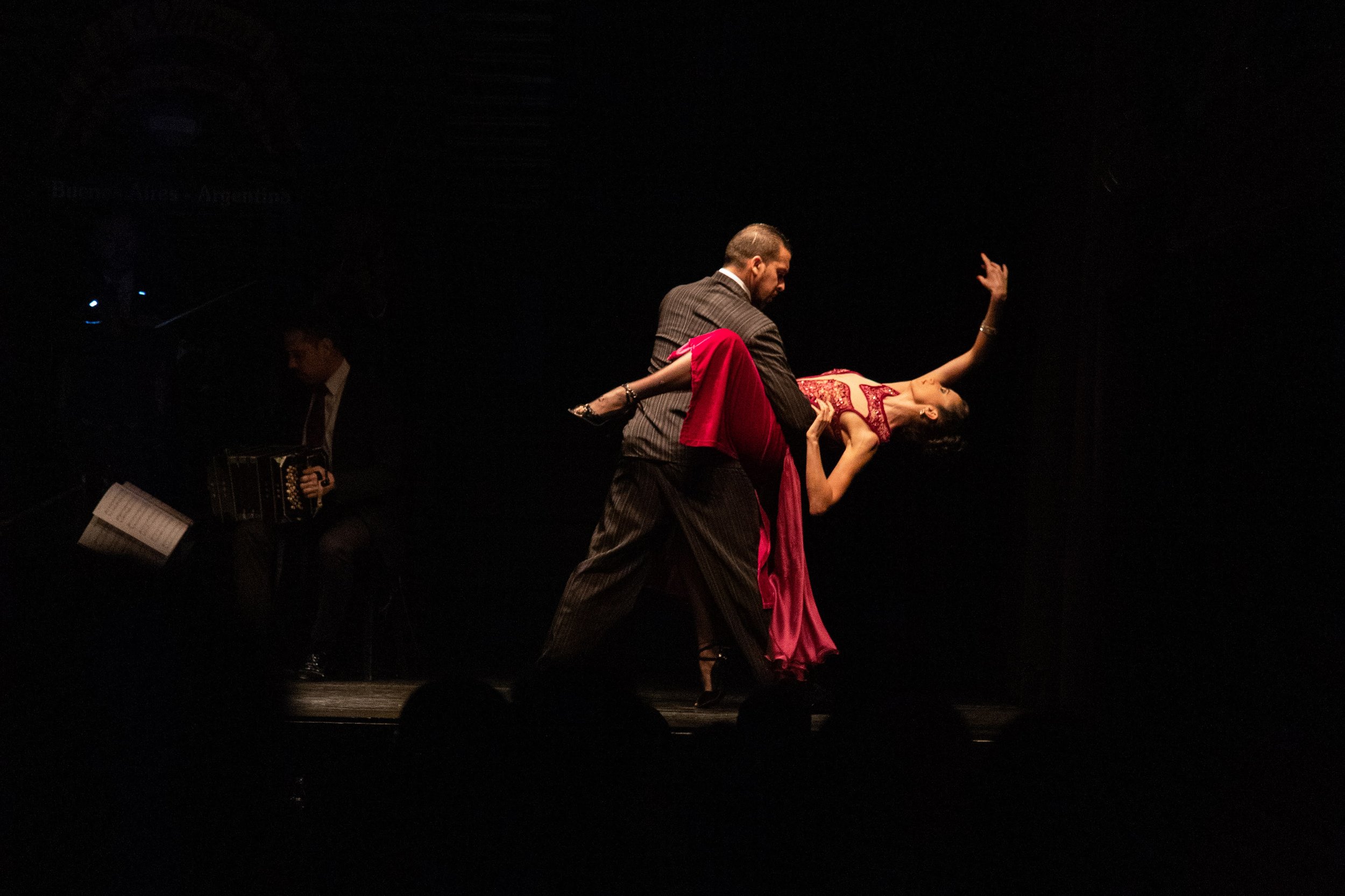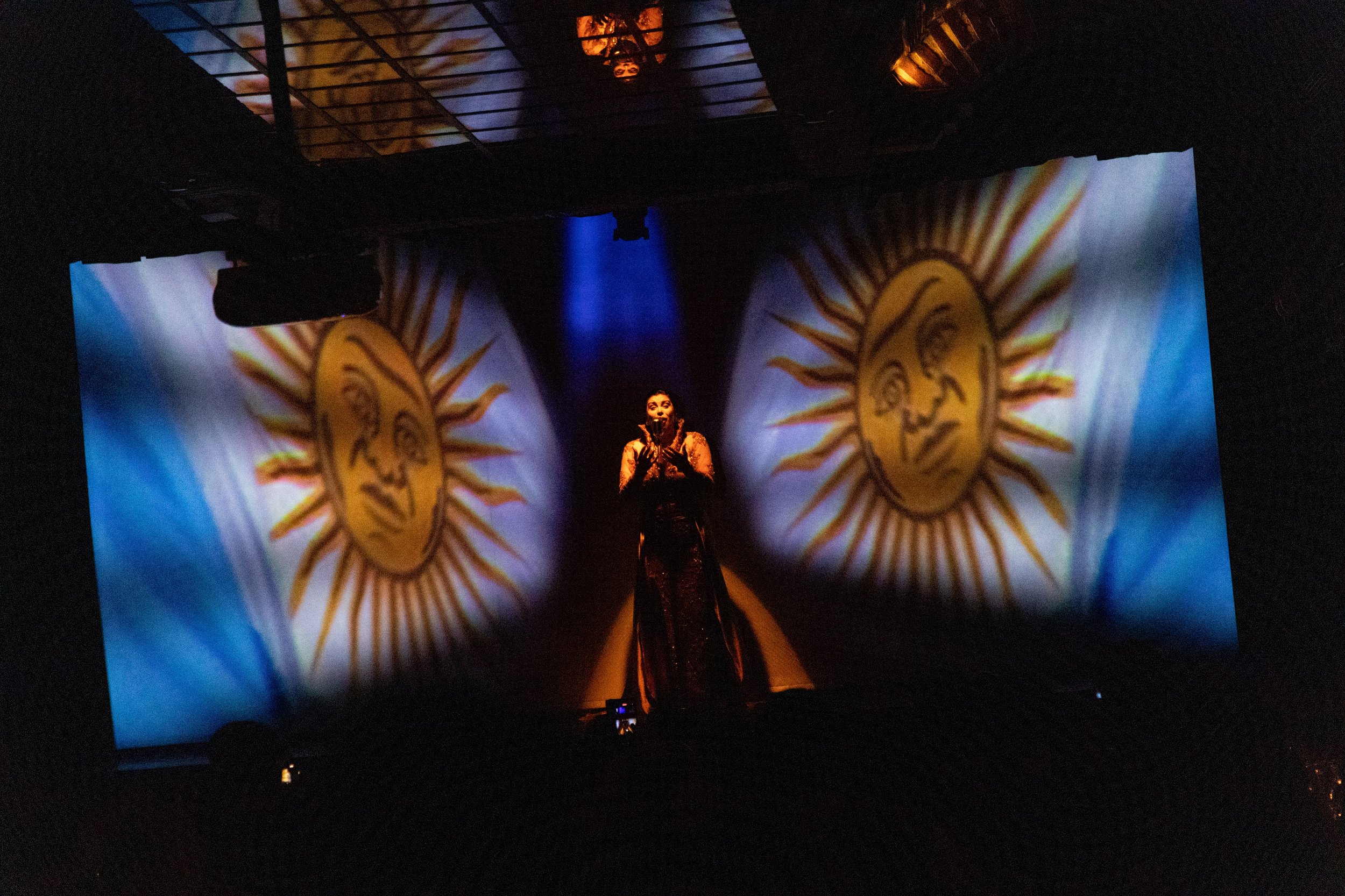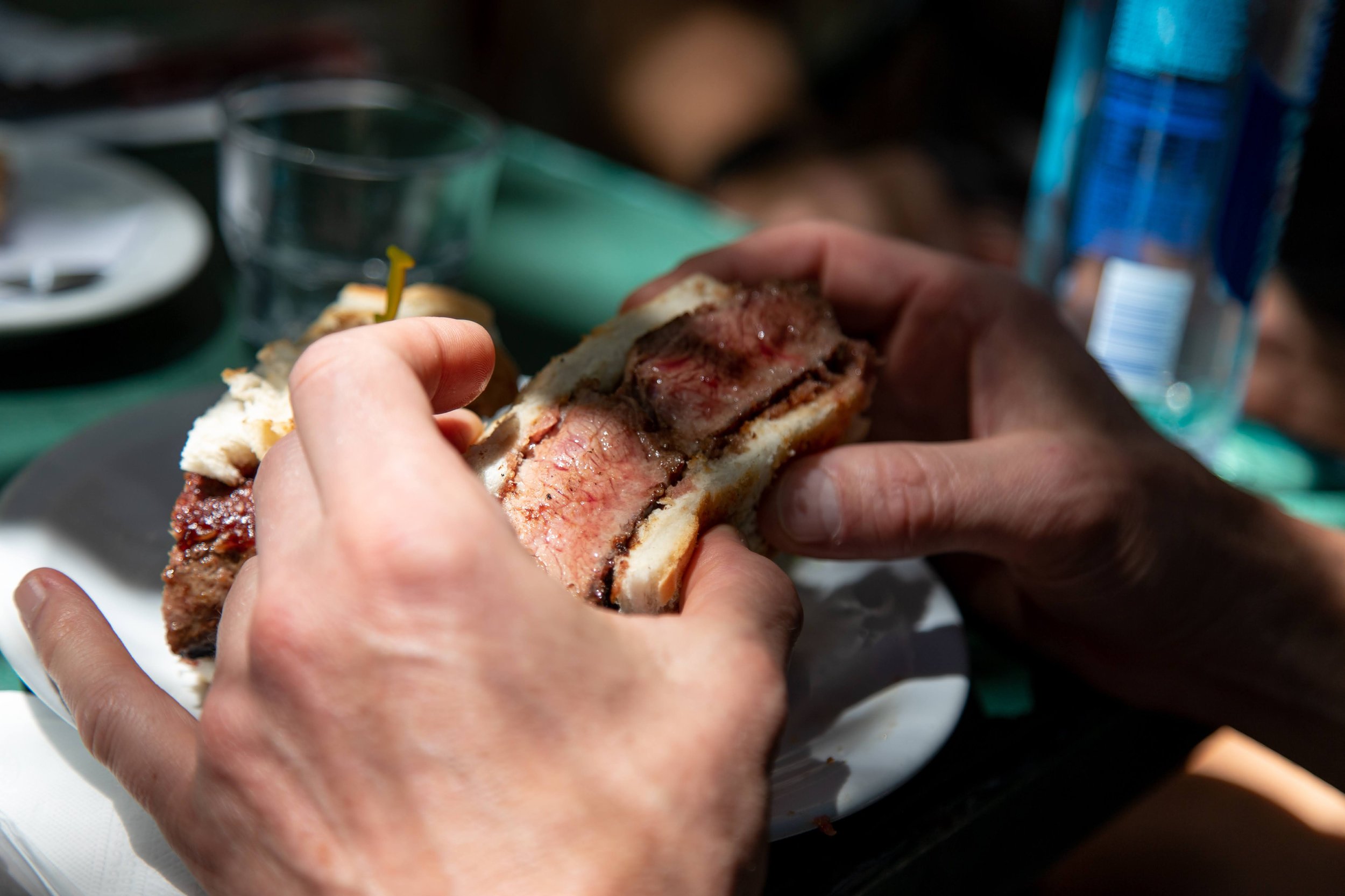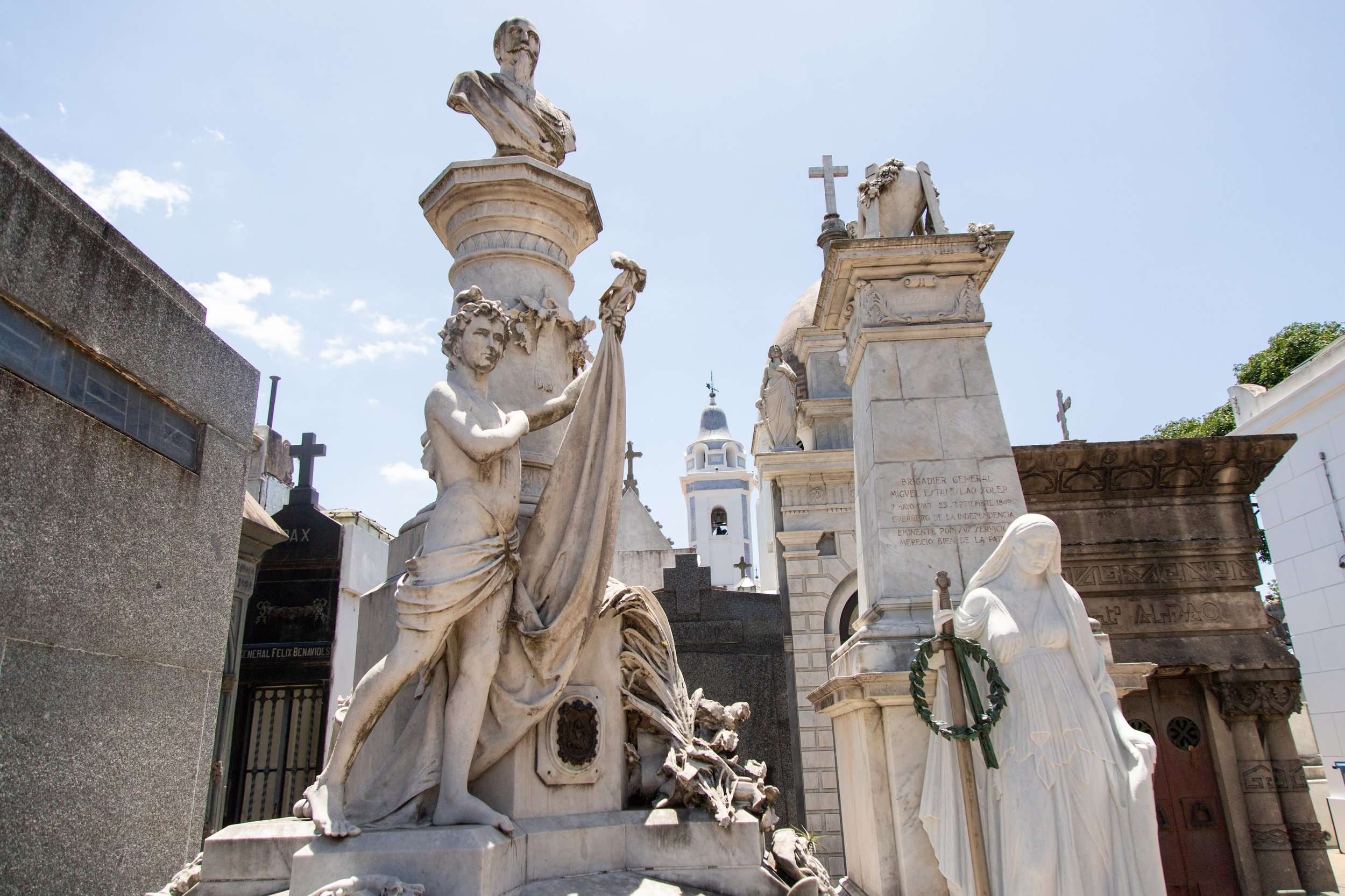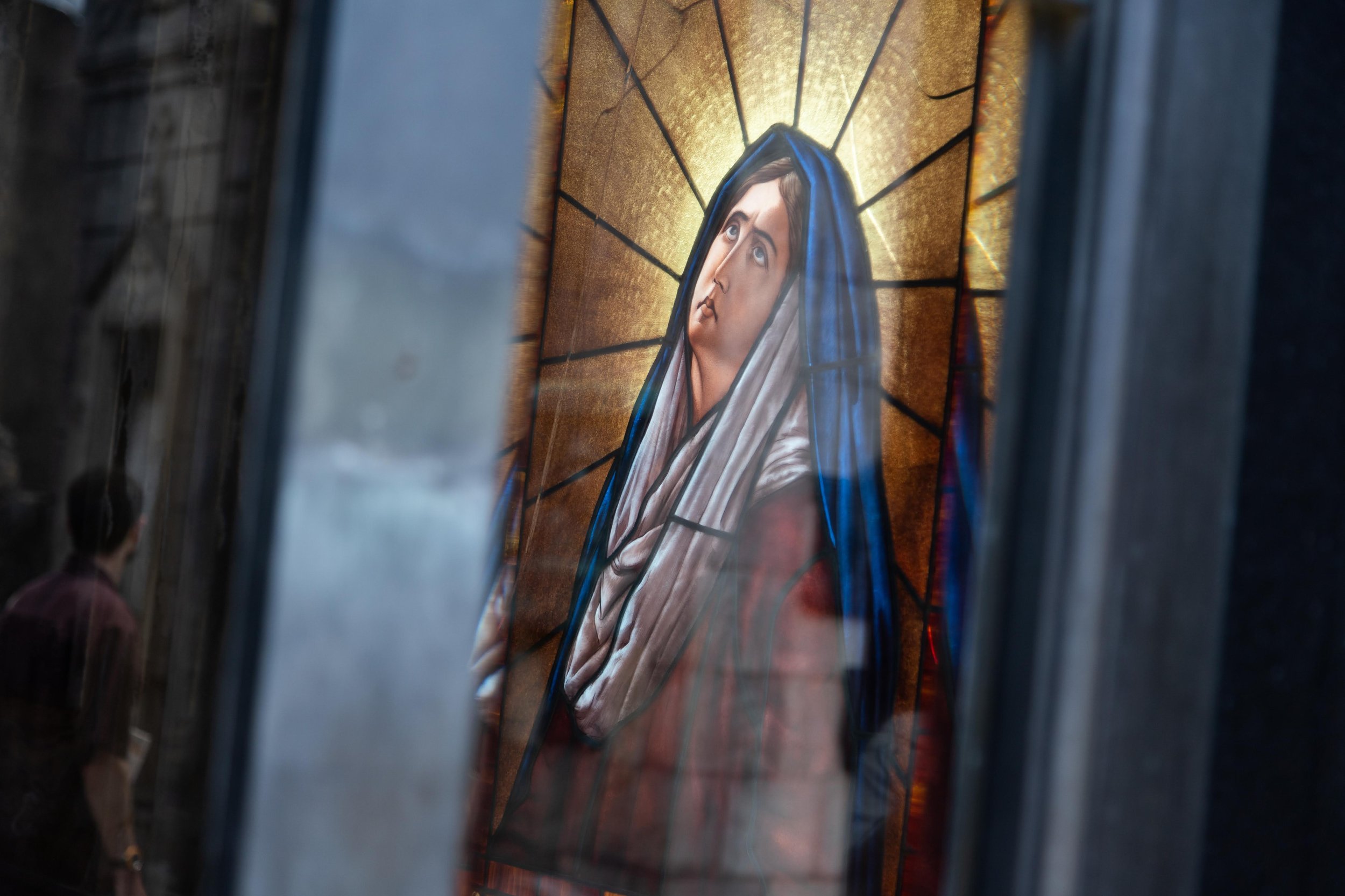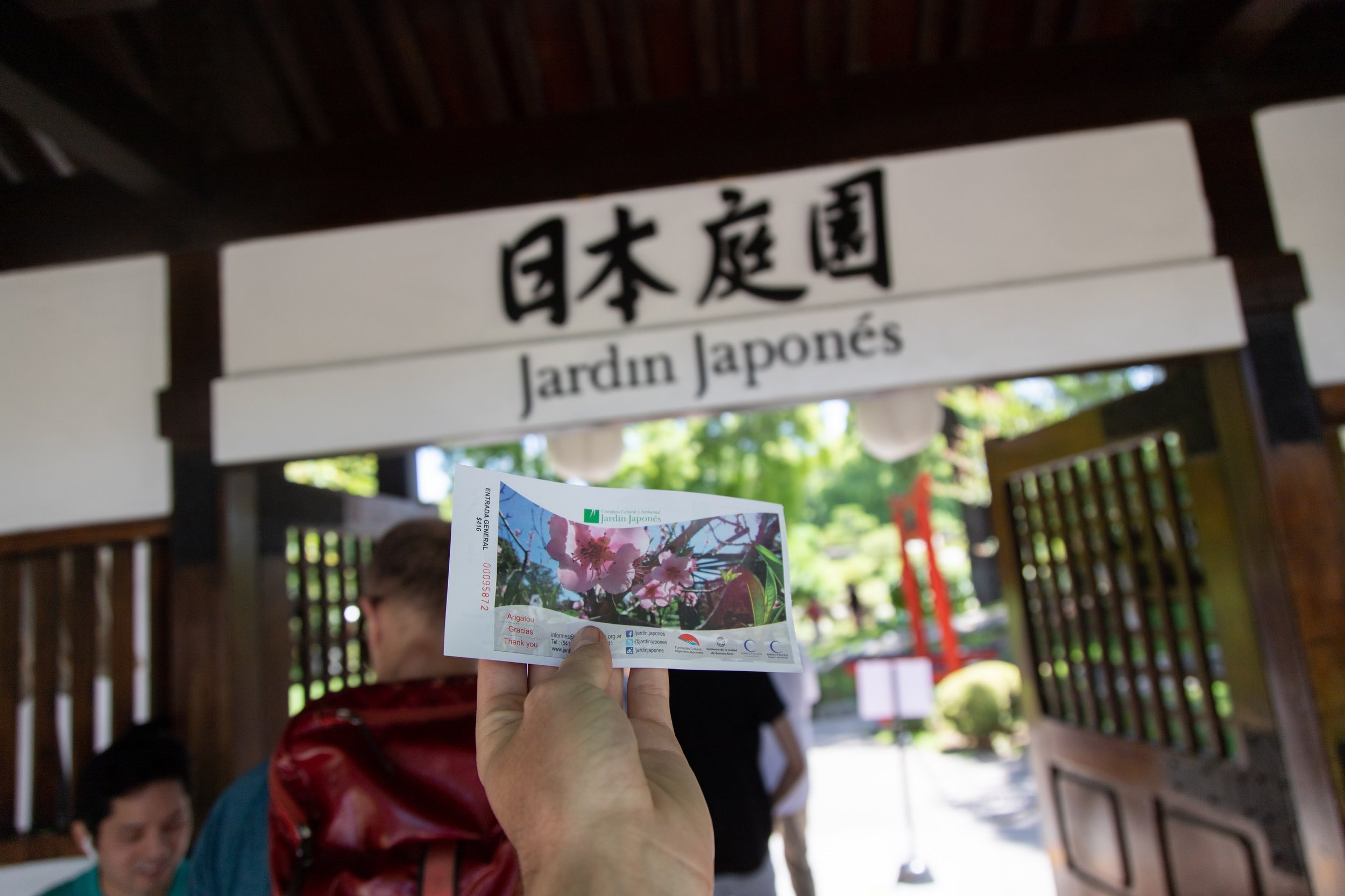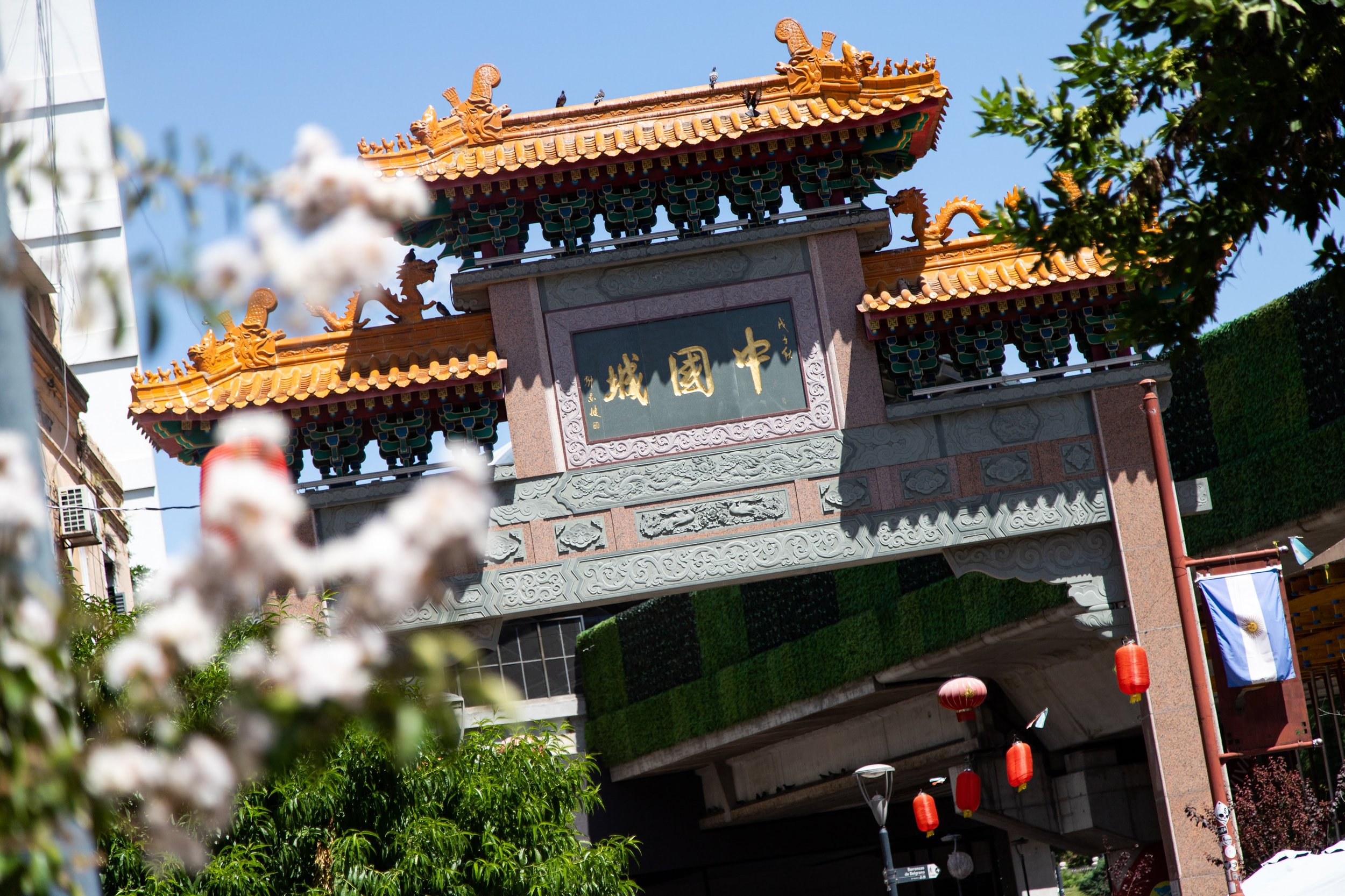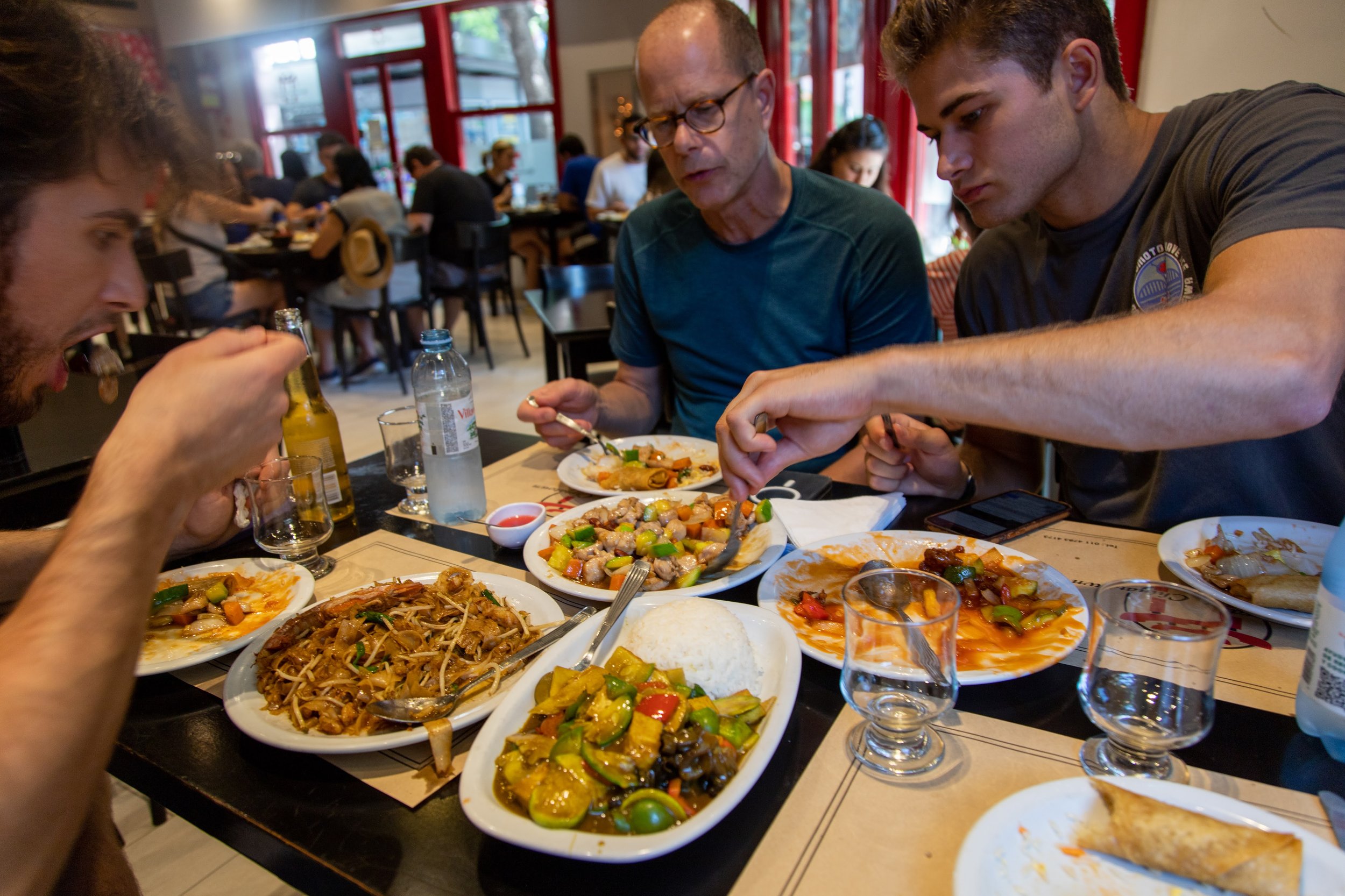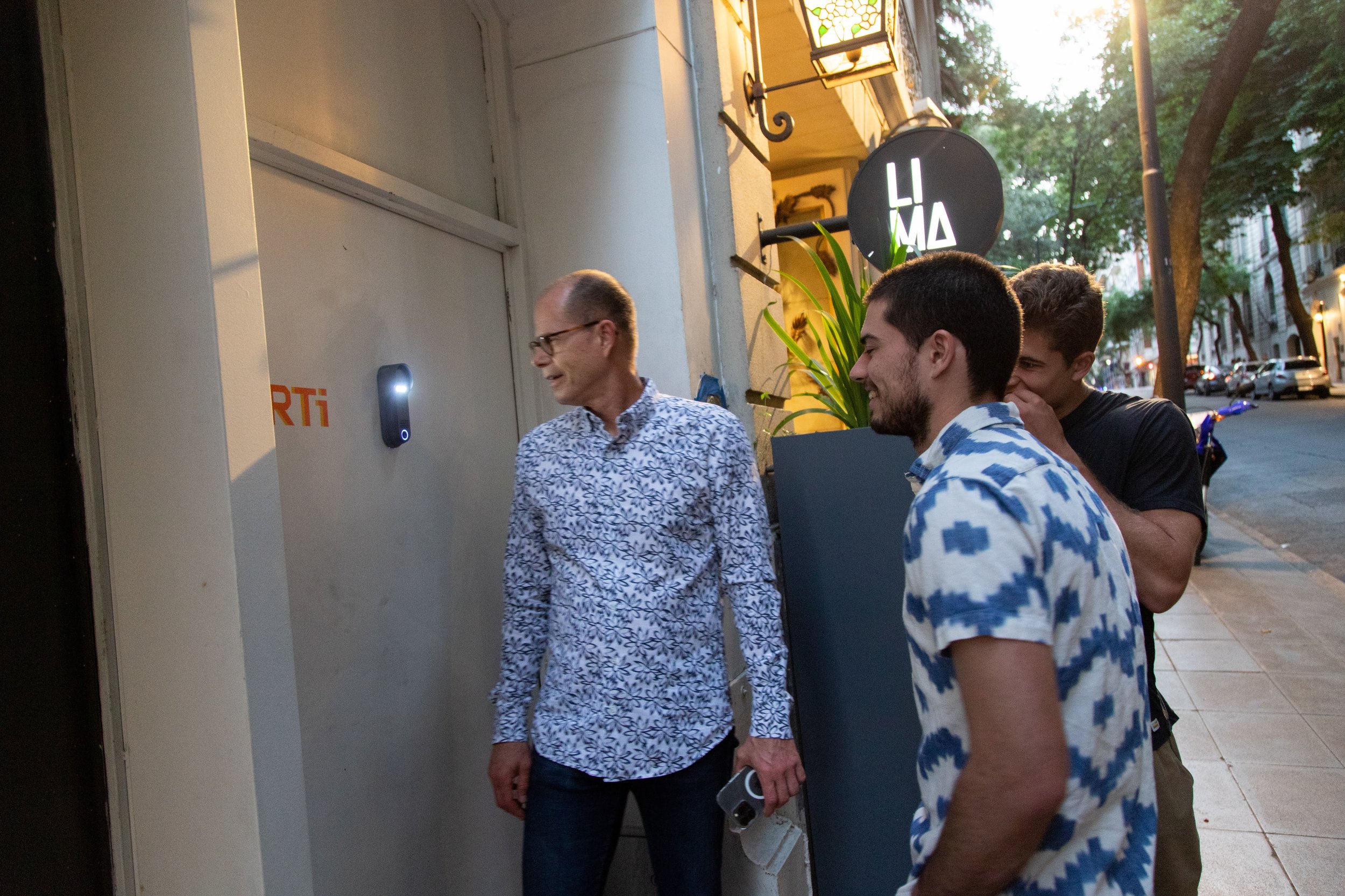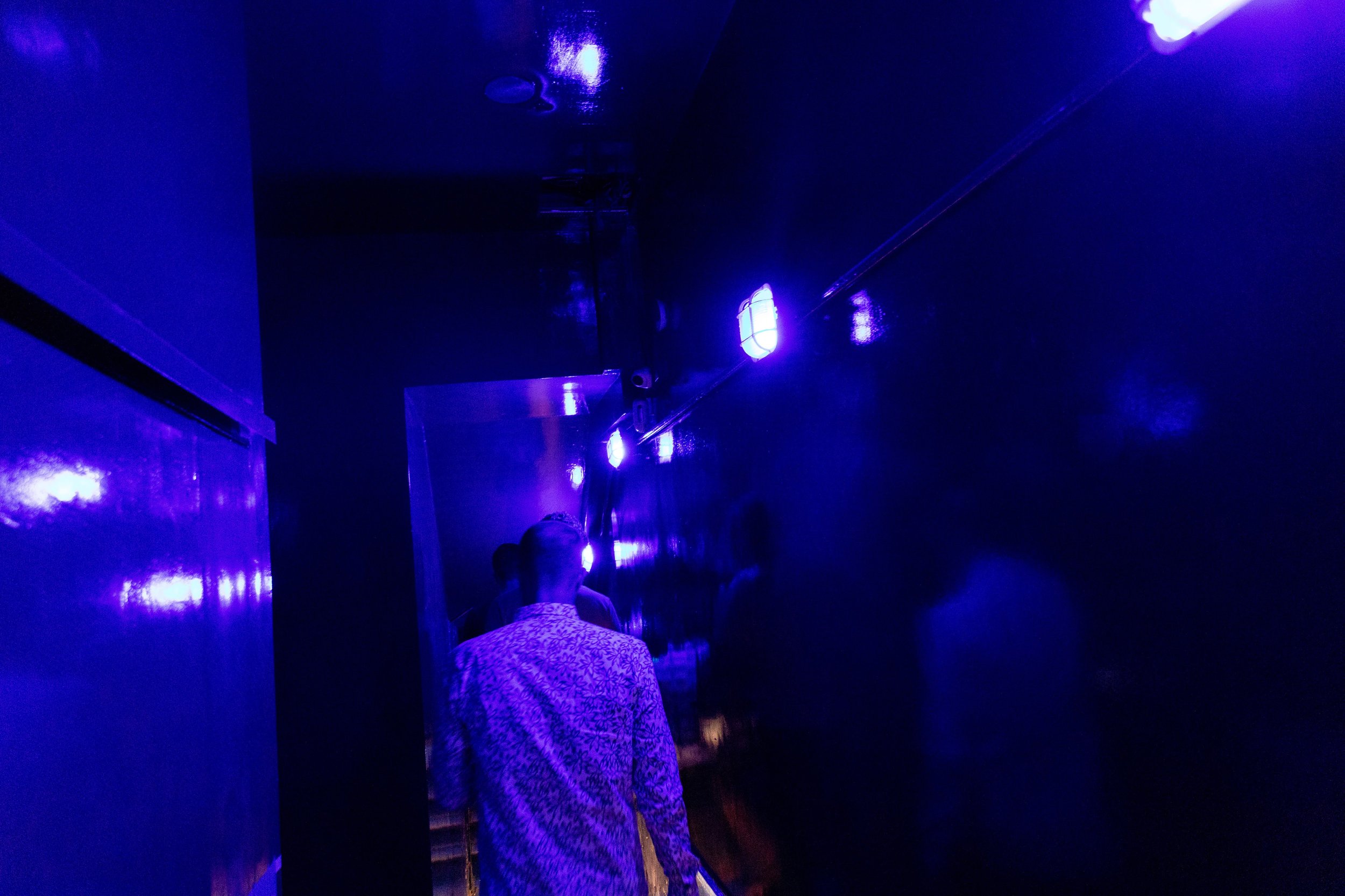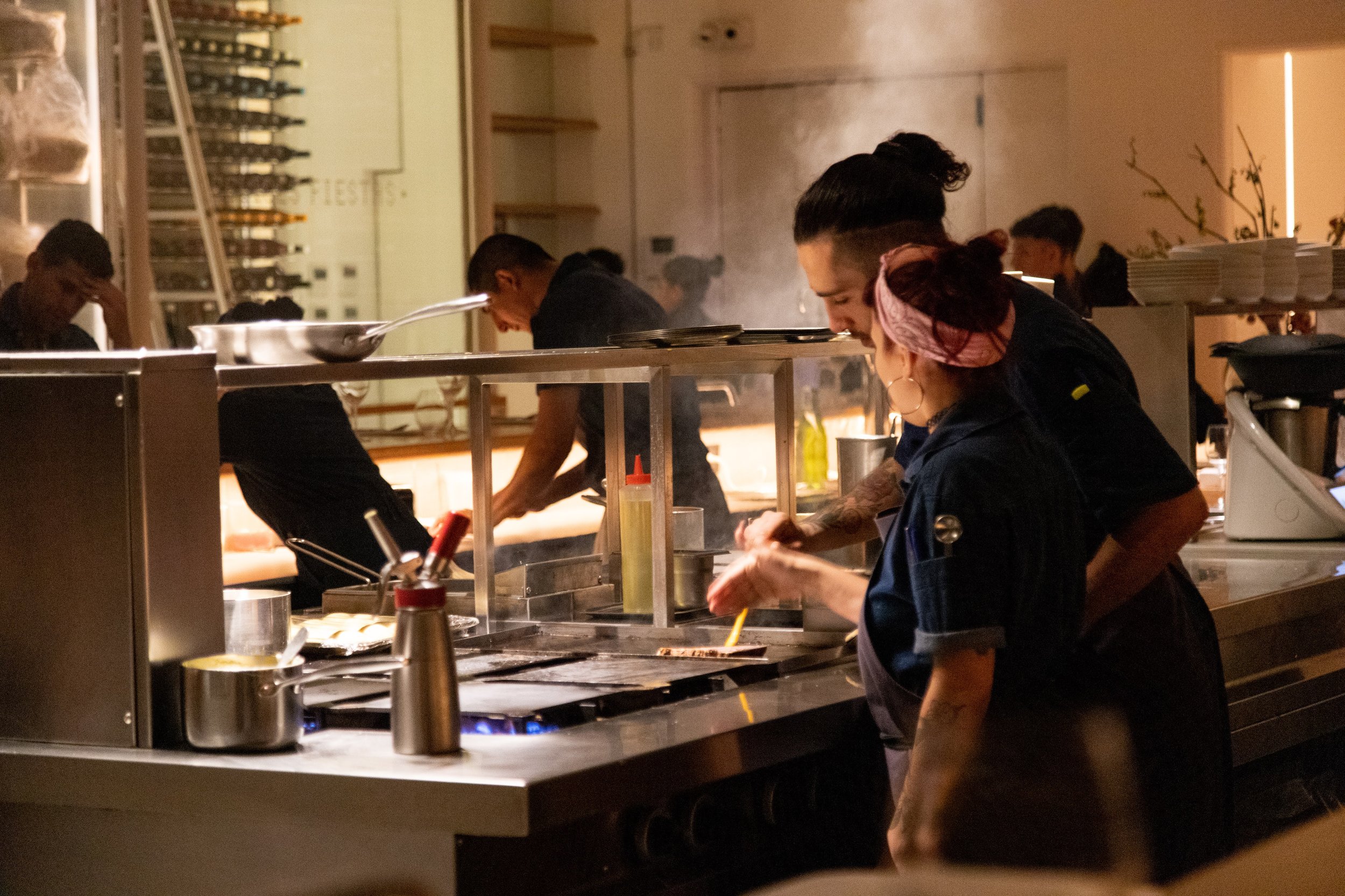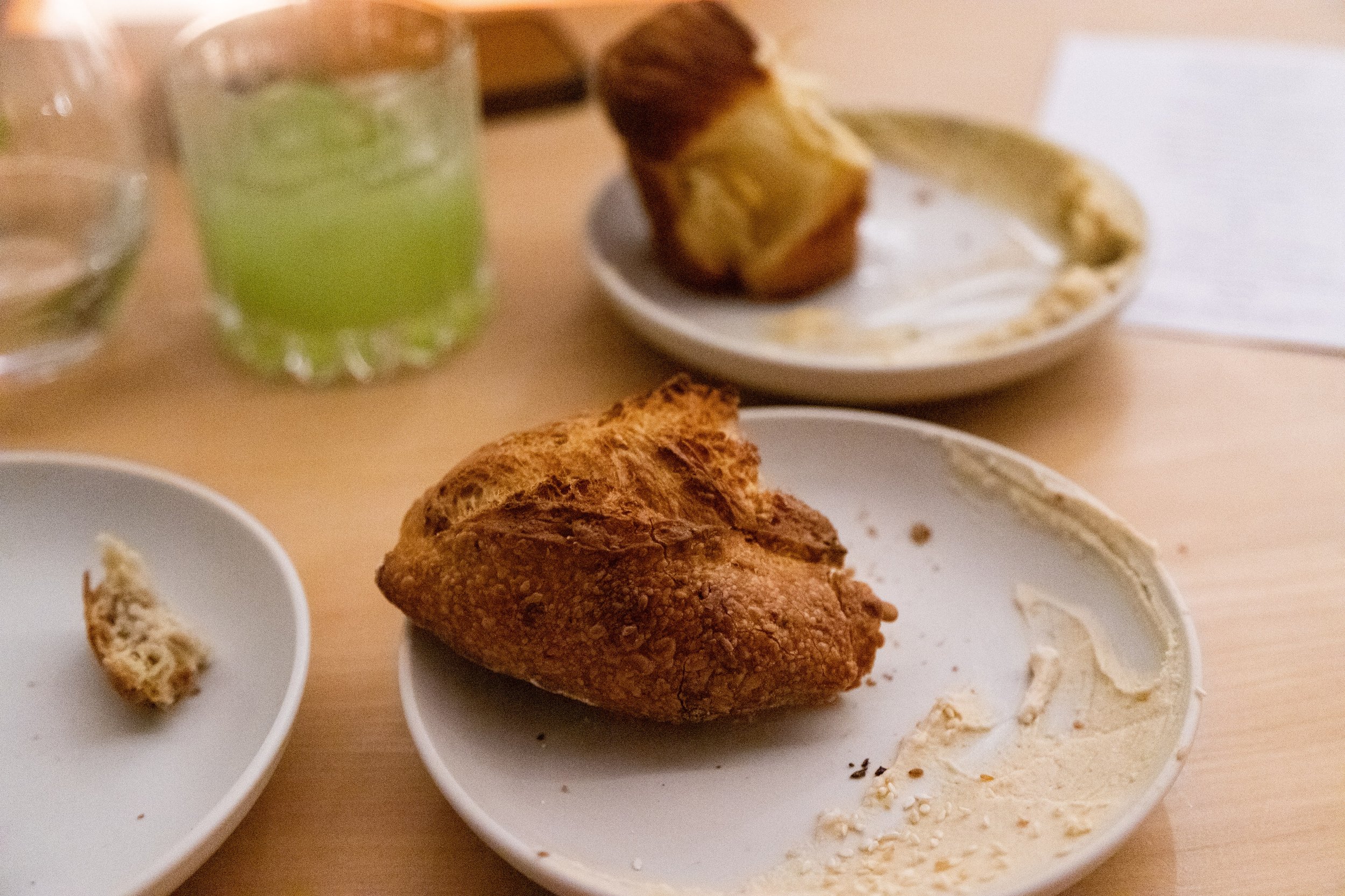S. American Advent — Part Four: Buenos Aires
Virtually the moment we landed in Buenos Aires, we could tell we weren’t in either Patagonia or Chile anymore. In Patagonia, the water had been a radiant blue or green, yet here the water of the Río de la Plata was brown. Everywhere we turned — from mural walls and billboard ads to socks for sale and Lays potato chip bags — we saw Lionel Messi. Looking out the window of our cab from the airport we saw — rather than the grass fields and animal herds of down south — a massive slum that could have come right off the page of Ready Player One.
We quickly settled in at our hotel, the Sofitel, before taking two cabs from the asphalt streets of Recoleta to the cobblestone streets of Palermo. Our destination? A parrilla I’d found on Google Maps called Lo de Jesús.
We sat on the patio of this self-styled “Malbequería,” duly following up a round of Negronis with a bottle of Altura Malbec from Mendoza. After such a long day of travel, though, we really had eyes for the food. Empanadas de carne, langostinos patagónicos al ajillo, chorizo, and mollejas arrived first, followed by the main event: the bife de chorizo.
“Somos argentinos, somos carnes y vinos” — a tagline that rhymes in English too
Speaking loud enough to hear each other over the busker — who reeled off international hits such as “Shape of You” and initiated each round of applause herself — we recounted the highs and lows of our time in Patagonia. By the time 10 o’clock rolled around, we’d finished our meal, though many patrons had yet to begin theirs. For instance, as we took a postprandial stroll around Palermo, we passed not a line but a crowd congregated around Don Julio.
One bar that we walked by was playing “Danza Kuduro,” prompting Ray to turn around and look at me, and as they opened their mouth I already knew what they were going to say. Ten years ago, the summer I graduated from high school, we visited Amsterdam on our way to a family safari in Tanzania. Ray and I went out together one of the nights, to the Icebar as well as a few cafés, at one of which they played that same song, as Spanish fútbol fans danced and sang along with the Puerto Rican artist in celebration of their country’s victory moments before in Euro 2012. Hearing it again tonight brought back a slice of the joy I’d felt at that moment, as a teenager getting one of his first tastes of freedom.
On the ride back to our Buenos Aires hotel, we felt carefree, gazing out at the city after dark as we listened to a mix of national and international hits on the radio.
“They used to call us the Paris of the South. Now we’re the Champions of the World.” So spoke our guide, Lucia, as we passed through the Plaza de la República the next morning on our way to begin our food tour. “It’s a good thing you weren’t here a week ago, because these streets were so clogged by the World Cup parade that we couldn’t have gone anywhere. Four million people attended, which is more than live within the city limits.”
Free from such scenes of mayhem, we briskly flew down Avenida 9 de Julio, passing the obelisk, Coca-Cola ads featuring Leo Messi, and the Ministry of Health building featuring a large likeness of Evita Perón, at least the third-most ubiquitous figure in the city after Messi and perhaps Diego Maradona.
We stopped first for pastries & coffee at Los Galgos, a café notables from the 1930s. I’d already had a small breakfast, but that didn’t stop me from wolfing down an entire tostado de jamon y queso before nibbling on a few alfajores and, of course, medialuna, coated in a crunchy layer of sugar. Ray remarked, sounding very much like our mom, that they “loved those little treats.”
From there we strolled through the theatre district, passing constant signage for Kentucky Pizza, which has evidently supplanted New York and Chicago in the mind of this country to become the go-to place for a slice. I hope that local Argentines visiting the Bluegrass State come rather for bourbon than for pizza.
After a brief stop at El Gato Negro — just long enough to buy a couple tea canisters — we drove down to San Telmo to visit a few shops in the Plaza Dorrego and Galería Solar de French, on the hunt for leather goods and trinkets. Then we turned our focus back to food and entered the Mercado San Telmo.
In the entry hall we passed merchants peddling pins, produce, and paintings. Then we squeezed through throngs and down a few stairs to find ourselves in front of La Choripanería, wasting little time to order up a couple beers to go along with their eponymous chorizo sandwich.
Nerves settled by the lager, I felt free to wander, first with my eyes and then with my feet. I weaved through the market, soaking in the symphonic frenzy of so many stalls and people jam-packed together. The heavy air, filled as it was with sounds of Spanish, oppressed me with a feeling of alienation — in the middle yet unable to understand what’s around. That said, I felt comforted by the palpable atmosphere of languor, which this market shared with so many other public places around the world enjoying Saturday afternoons of their own.
Just when I thought I couldn’t stomach any more food, we arrived in front of the empanada stand El Hornero. Taking mercy on my belly, I went the vegetarian route, ordering the Humita (featuring corn, onion, & cheese), and the Vegetales (featuring eggplant, pumpkin & zucchini).
One Havanna cookie later, our food tour concluded and we took a short rest at the hotel before meeting our art guide Maia in the hotel lobby and driving to the Museo de Arte Latinoamericano de Buenos Aires, better known as MALBA.
Inside, we ambled from one exhibit to the next, foregoing the long line leading to the Frida Kahlo exhibit. Various pieces of art spoke to such subjects as the simultaneity of attraction and repulsion in sexual relationships, the cards missing from the societal deck as a result of revolution and death, and how moving metallic circles look kinda cool.
Many of the featured artists had lived throughout the Americas. For instance, Anna Maria Maiolino, whose exhibit occupied nearly an entire floor, had lived in Caracas, Rio de Janeiro, New York City, and of course Buenos Aires before coming to reside in São Paulo.
Johnny and I stayed engaged by playing a variation of a game our grandfather had used to: choosing, in every room, which piece of art we’d most want to take home with us, with a short justification as to why. I chose with my gut, mostly selecting those that were appealing visually or else too crazy to pass up.
Exiting MALBA, we walked past embassy row to a street of townhouses. Maia rang at one and a man opened the door — they conversed in Spanish before Maia exclaimed in English “oh it’s this one!” and scurried next door to ring again. Indeed this one looked more like it — a woman came to the door and we entered a small gallery like you might find in Chelsea, NYC. Animals adorned nearly every corner of the small exhibit.
Next, we strolled to another small townhouse and walked upstairs to its two galleries. A little more experiential, the one included a sound bath of chirping birds and rushing water. Two older women sat conversing in one of the open windowsills. Like at the mercado, I couldn’t have understood them even if I could hear what they were saying, yet I began to feel wistful all the same. Perhaps it was their languorous manner, or the green tree branches swaying behind them in the warm summer breeze, or the hope of mine that — one day — I’ll be able to feel as at home in cities around the world as those two women looked.
Art viewing done for the day, we reposed in the backyard of the Palacio Duhau, sipping cocktails as we bade farewell to Maia. We sat at the bottom of a small hill, at the top of which was another dining area, on whose patio a man and a woman danced the tango. Safe to say, this gave me some ideas… and after dining on a mouthwatering flank steak at El Mirasol de La Recova, we returned to San Telmo for a full-on tango show.
As our host walked us from the lobby downstairs to the basement performing hall, he asked “Spanish or English?” and as we responded using the latter he rejoined that “the only Spanish you need to know is ‘mas vino.’” I’ll leave it to your imagination as to whether we put this lesson to use.
We sat down as those who’d booked the dinner package were moving on to dessert, prompting my dad to remark that this felt like the Medieval Times of Argentina. His point aged well throughout the night; while at face value the place felt touristy, the entire program was in Spanish and the place seemed to be filled with local families, perhaps in from the suburbs.
The show kicked off with an ensemble of 2 accordions, 2 violins, 1 cello, and 1 piano. The performers soon emerged to dance their dance, before retreating for interludes featuring music alone. We were treated to a diverse musical selection, for instance a folk band as well as male and female soloists, whose renditions prompted my dad to remark that “it’s like a tango opera.”
The dancers mesmerized. It’s as if, when the men would lift the women up, they were walking and dancing on air. I kept wondering how they avoided kicking each other, thinking that if my girlfriend and I tried doing this without any practice then someone would likely get hurt.
Save for the dancing and the music, the star of the show had to be… the state propaganda. During an otherwise-normal musical number, our table being in the back of the hall, I’d walked all the way to the front to use the bathroom located at stage right. Emerging just a few minutes later, my path back was barred by a row of flag bearers, zealously waving the Bandera Oficial de Ceremonia. As the crowd sang along, enthralled, to what presumably was the national anthem or at least an Argentine equivalent to “God Bless America,” I looked back and could see my family laughing at my impromptu inclusion in the show. All I was missing was a flag.
As the show went on the entertainment seemed to reach a fever pitch, the acts continuing to diversify to a sort of tap dancing at one moment and black-and-white movie reels the next. For the grand finale, with pretty much the full cast of performers crammed onstage, they brought out the coup de grâce: a 3rd accordion.
After the final curtain, I looked out at all the happy families and thought this is rather cute.
For a nightcap, we headed up Avenida Alicia Moreau de Justo to Dada Bistró, which Maia had billed as an artist’s café. Unfortunately or not, I don’t have the clearest memory from this stage in the night, other than that it had a cozy and lively vibe as well as some entertaining bathroom signs.
Drinks finished, we decided to take the twenty-minute walk back to the hotel rather than bother with cabs. Passing through the dark, deserted city — it was a Wednesday, after all — I felt as if we might be at the threshold of an invisible boundary across which lies a Borgesian universe, as if one turn around the corner might land us in one of his fictional labyrinths.
The sun rose before we did on our final full day in South America. We had nothing on the schedule, but thought we might as well walk over to the famous cemetery in our neighborhood.
But first: steak. Indeed, we couldn’t resist stopping at a café along the way — Confiteria La Rambla — and indulging in their specialty, the lomito:
This time around, I noticed a (slight) improvement in our facility using simple Spanish words. For instance, rather than order my steak sandwich straight-up, I had it with lettuce and tomato and “con pimientos.”
Strolling along through Recoleta, I flashed back — and not for the first time this trip — to my brief time in Milan. Perhaps it’s that both are international cities, or that much of BA’s architecture has a European feel. I don’t know.
The parakeets flying around and squawking sure did feel distinct from Lombardy. As did the massive tree in the middle of the Plaza San Martin de Tours — perhaps an Ombú or Gomero — that a few of my brothers climbed.
Soon we made it to the Cementerio de la Recoleta and walked down its winding lanes.
On the one hand, the place is rather epic, solemn, and eerie. I mean, just look at these mausoleums. It felt like a setting for a novel. And it’s so centrally located, with many viewpoints featuring regular buildings mixed into the background with the graves, that you can imagine how thin the boundary is between the two worlds. People start in the metropolis and end in the necropolis.
On the other hand, it’s a tourist trap just like any other. We’d waited in line to pay the entrance fee, passing tour groups on our way through the front gate. Most of the graves I looked at were far from contemporary, leading me to wonder if anyone even gets buried here anymore. Small crowds thronged around personalidades notables sepultadas, none moreso than the omnipresent Evita Perón.
As we passed a headless almsman on the way out, Ray decided to head to Chacarita and pay a visit to a bookstore and handicrafts shop. The rest of us stopped for a bottle of water, and at a convenience store I found a 2-liter one that cost… 30 cents USD. It turns out that a stagnating economy paired with a 100% annual inflation rate can result in quite favorable exchange rates for Americans… and that’s not to mention the 2x boost granted to foreign credit card transactions, intended to help spur tourism. Our Ubers had been costing less than $5, and our dinner the first night, a full spread of appetizers, steaks, and drinks for 5 people had cost under $200.
We ambled on rather aimlessly, generally in the direction of the green parks. As we passed the subway, I reflected on how much this city evoked the feel of New York. They even had their own SoHo in Palermo, complete with its cobblestone streets. The intersections, however, were even moreso first-come first-serve than Manhattan. Many didn’t have lights or stop signs, and Maia had told us that while cars are supposed to stop for pedestrians, they generally don’t. Well…
After passing the South Korean embassy and German Plaza, we found ourselves at a Japanese Garden and figured: why not? At the least, it would build anticipation for my upcoming trip there this spring break. We learned that while Argentina is over 7x larger than Japan in land mass, it’s 3x smaller in terms of population.
Next up, we took the cab to Belgrano for a late lunch stop in Chinatown. You might think it odd or even inexplicable that we’d spend one of our two full days here exploring East Asian attractions. Yet we’d more or less tried the core classic Argentinian dishes, and part of every international city is its international neighborhoods. Besides, my friend had lived here as a kid and had loved going out for Chinese food, which sounded like a refreshing option after all the red meat we’d been having.
Our first choice — a hole in the wall with unique looking dishes — had begun closing in preparation for dinner. Yet we found a solid spot and ordered as much as we could: arrolladitos, cerdo frito agridulce, veggie curry, arroz con langostino, fideos de arroz ancho, and Kung Pao chicken.
There were a couple subtle differences between our fare and traditional Americanized Chinese food — almonds rather than peanuts in the Kung Pao, different shape and texture to the spring rolls, additional types of veggies diced with the meat — but our satisfaction was the same.
That said, by now I was very much feeling the cumulative effects of all the food and alcohol, and was relieved to learn we’d be dining vegetarian that evening.
That didn’t stop me from ordering ossobuco empanadas along with an apéritif at the hotel bar (how could I not?). As we walked over to MARTi at sunset, I looked out at the train tracks and wondered what was going on right now on the other side, at the slums we’d passed on our arrival.
We’d arrived at our destination but didn’t see an entrance, actually following other pedestrians into the hotel lobby next door before realizing it wasn’t the right place. Looking closer, we found an inconspicuous white door with only the smallest of signage. We hit the intercom, claimed our reservation, and they deigned to buzz us in.
After walking downstairs through a long, dark hallway, we arrived into a bright room with glass walls and a long bar table concentrically centered around an open kitchen.
Here, as with the other places, we attempted to get the maximum from the menu, successfully devouring twenty plates. I’ll most remember enjoying their delightful variety of breads, the chori bao magic, and the the humita corn crisps, topped off by a Hennessy Old Fashioned.
Going to the bathroom involved walking out of the restaurant proper and into… a clothing store.
We’d been the first patrons to arrive, still accustomed to our American hours for eating. As we left, not an empty seat could be found, with more doubtless yet to arrive. Glancing at a few other patrons, I imagined this as a meeting place for artists, for fashion designers, for international businessmen and their mistresses, for young-adult friend groups newly flush with cash. And, of course, for an American family of tourists.
Back at the hotel, I said my goodbyes, as I’d be flying back to LA early the next morning whereas my family would be heading back to Chicago and DC via São Paulo and Toronto.
I rose before the sun to head to the airport, and after waiting in a long line that thwarted any ideas of food or coffee, was airborne not long after 7am.
First we made a long curve over the Río de la Plata and its muddy waters, before flying high over farmland and then the rainforest. With all the clouds covering it, it felt like flying over the ocean.
After a quick layover in Bogota, featuring a mad rush to get sustenance, I boarded my final flight for Los Angeles.
Up in the air, we passed ships going in and out of the Panama Canal, a blanket of clouds covering the land of Costa Rica but not the adjacent waters, two volcanoes in the middle of a rather large lake in Nicaragua, a couple volcanoes emitting smoke from their tops, and cloud-covered Oaxaca and Mexico City.
So many places to visit. What if I’d taken the long way back and stopped at each of them? Perhaps some other time.
My plane began its descent as the sunset reflected off the Gulf of California. Only one more sunset and then when the sun would rise again, it would bring with it a new year.
To see Johnny’s full photo album from Buenos Aires, click here.
That concludes our trip to South America. Thank you for reading!

